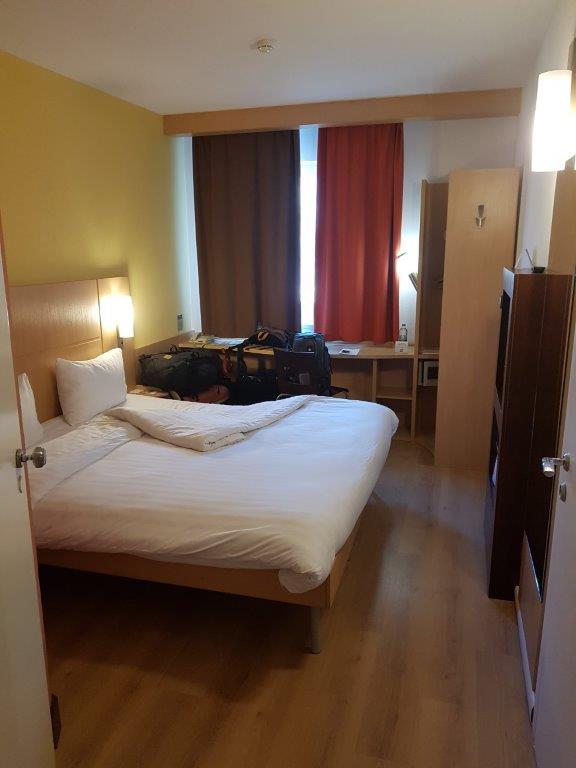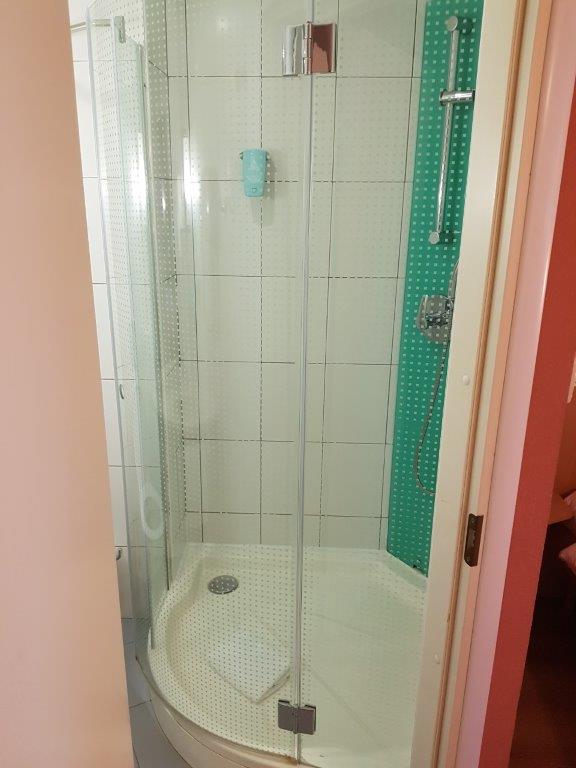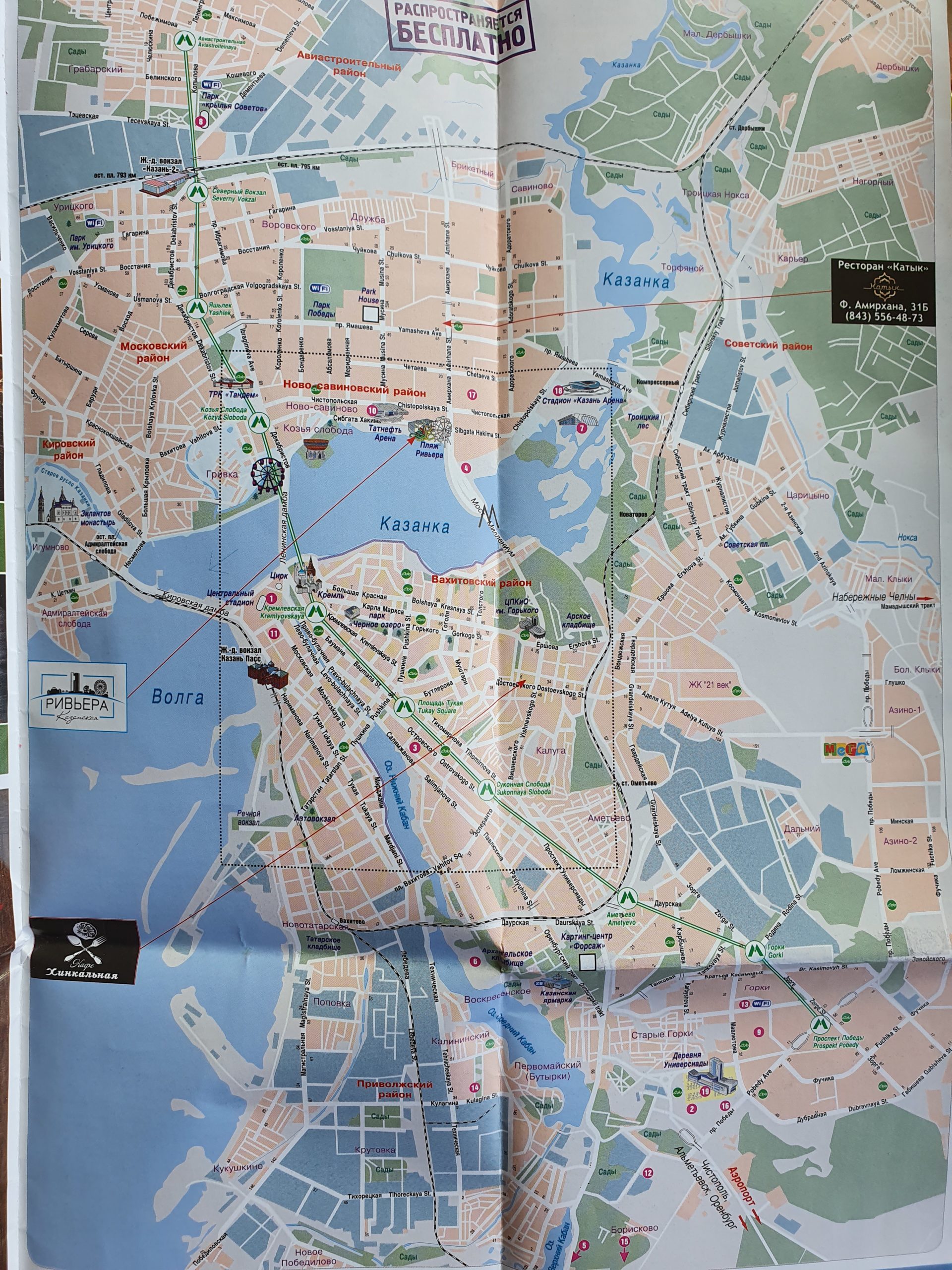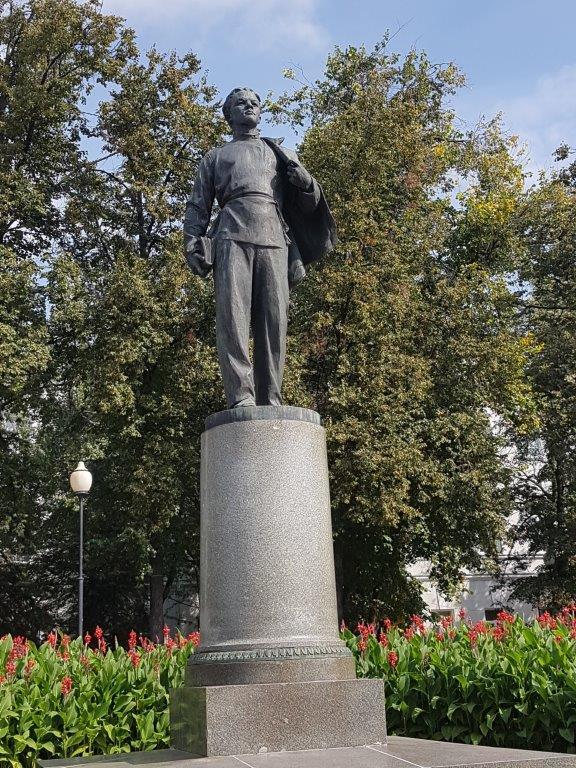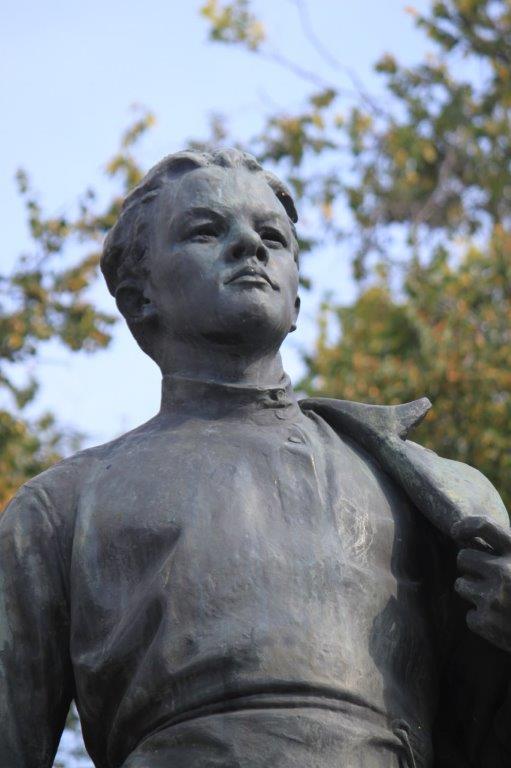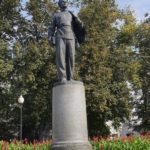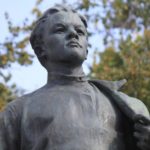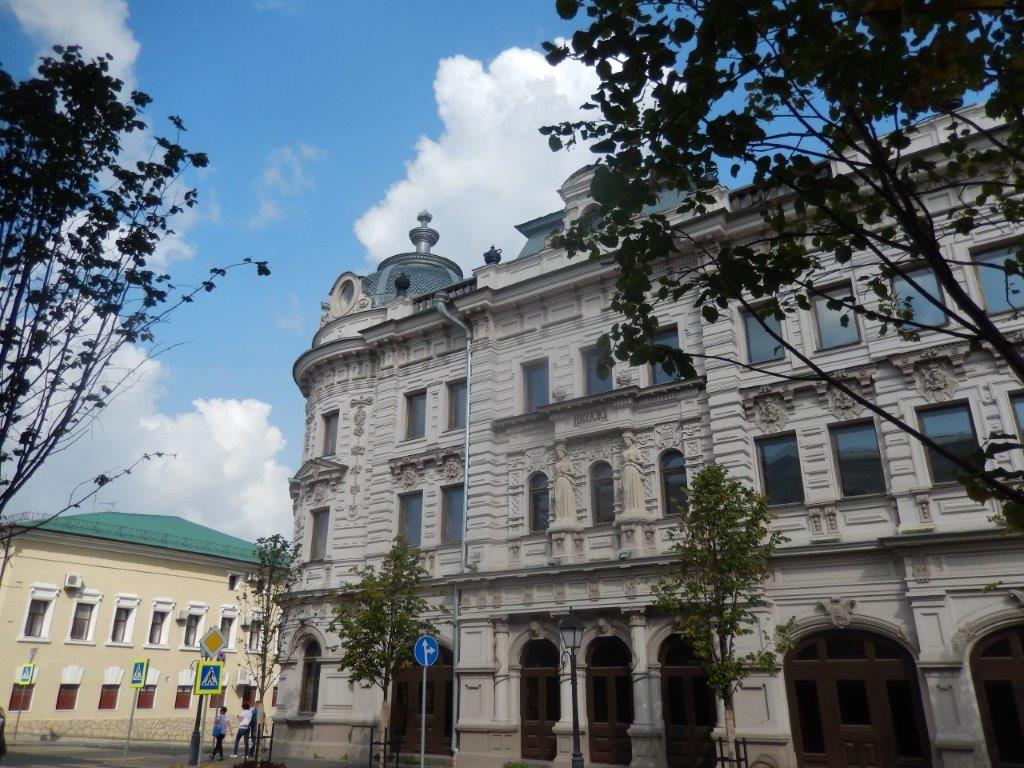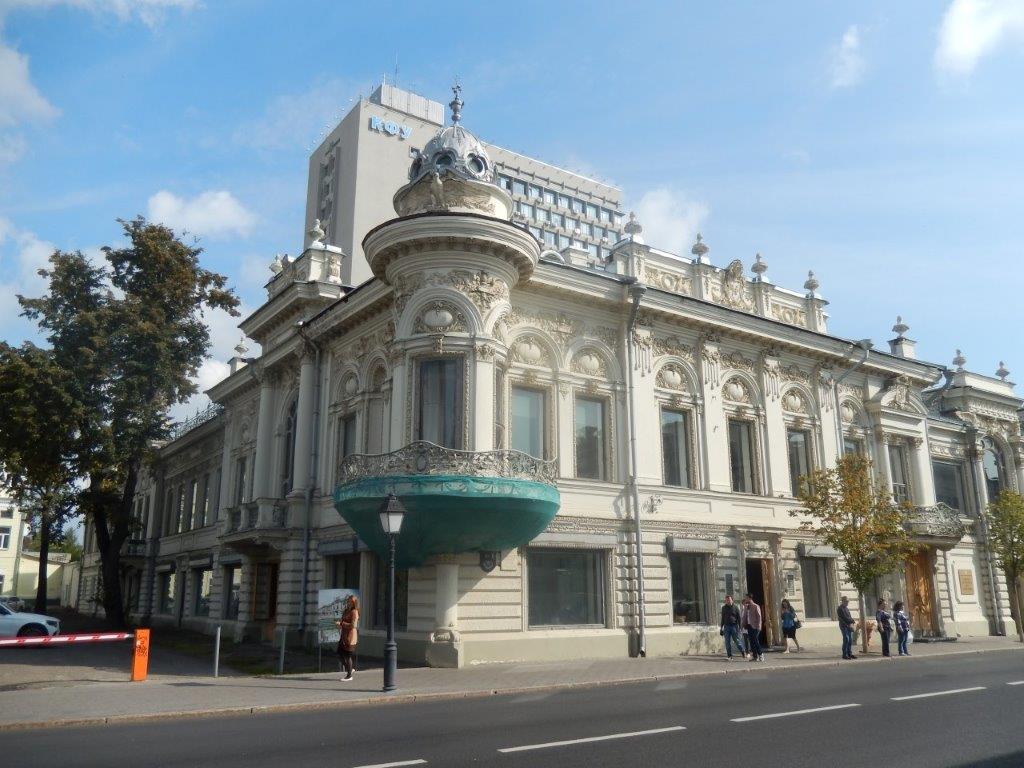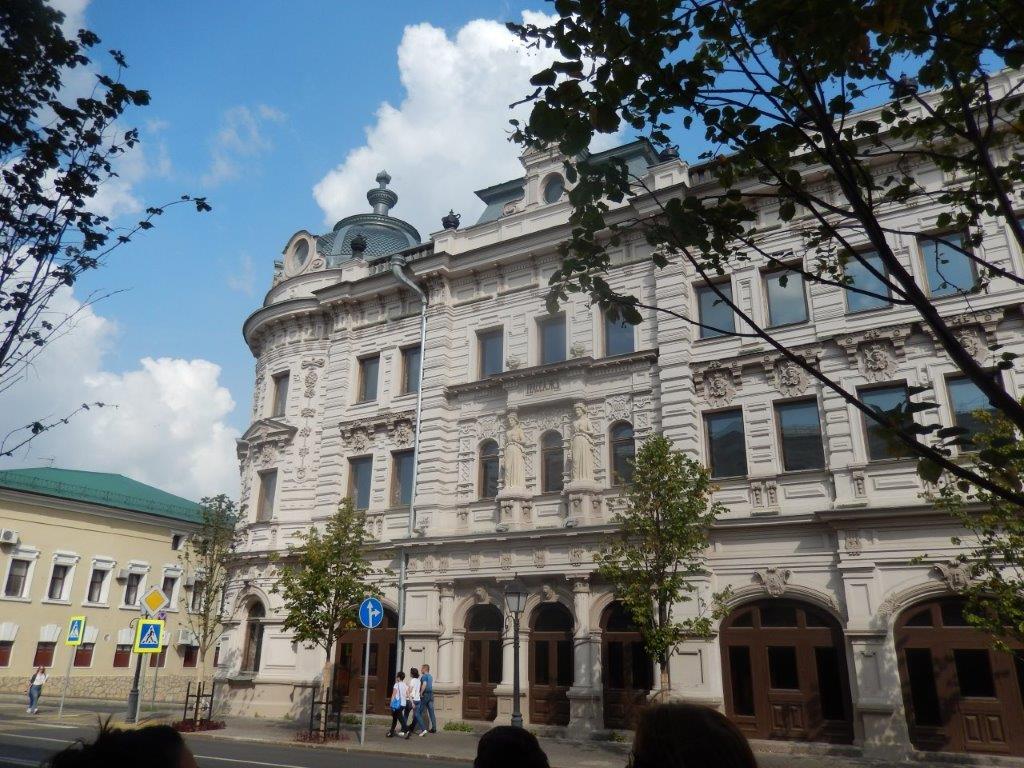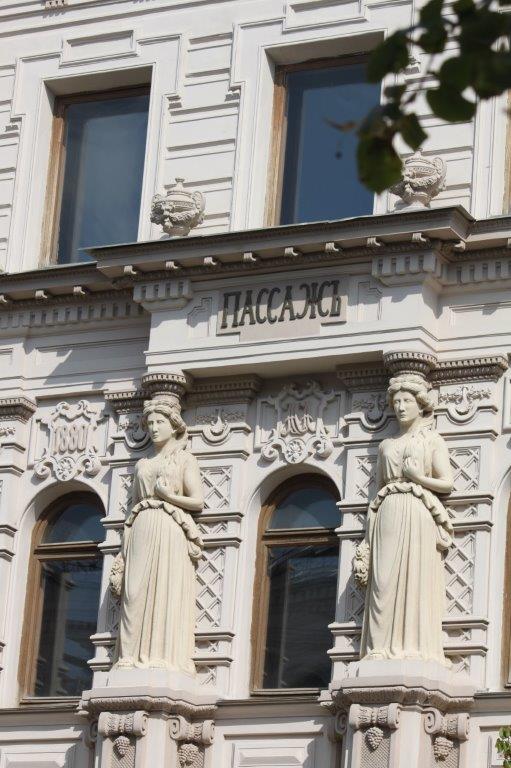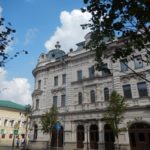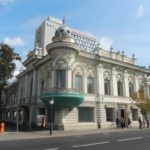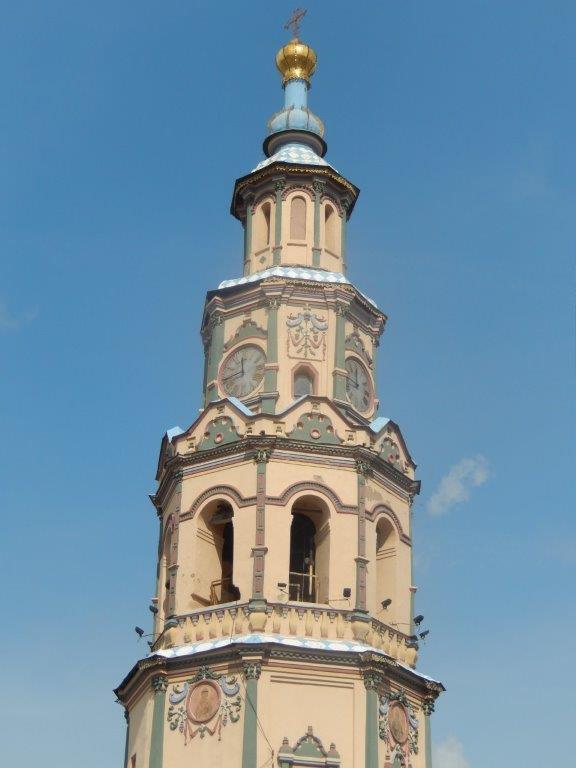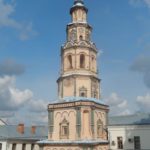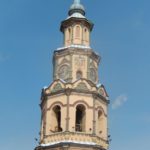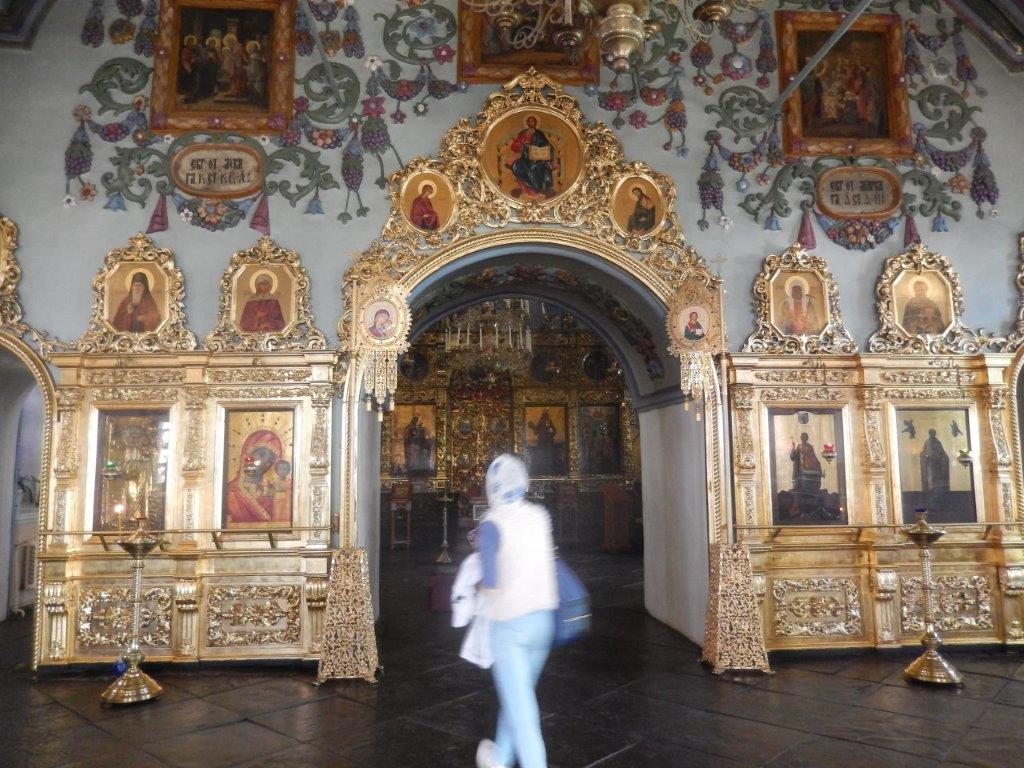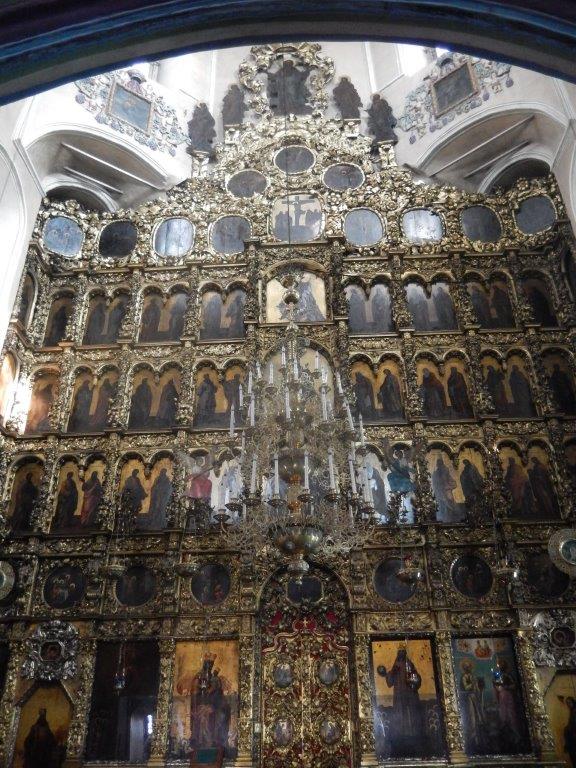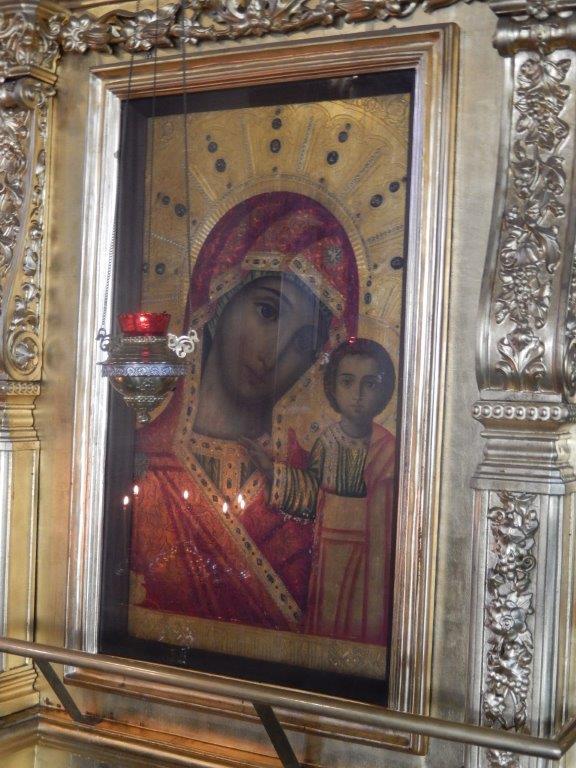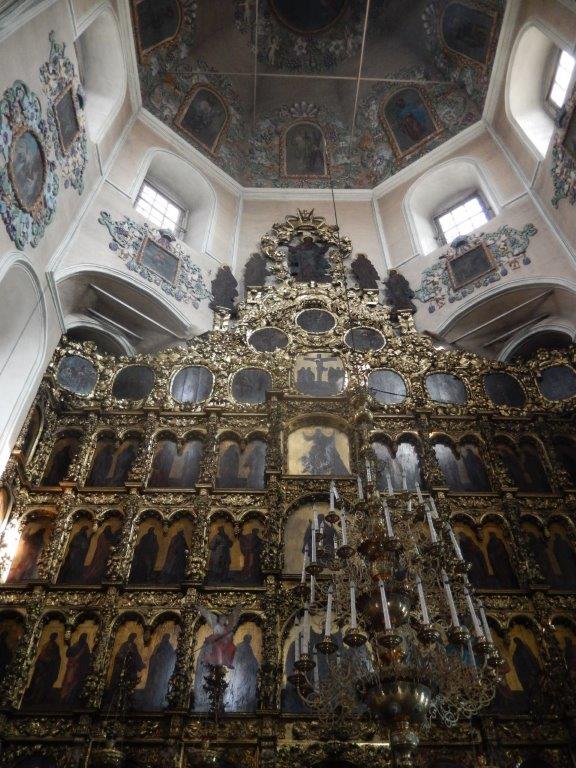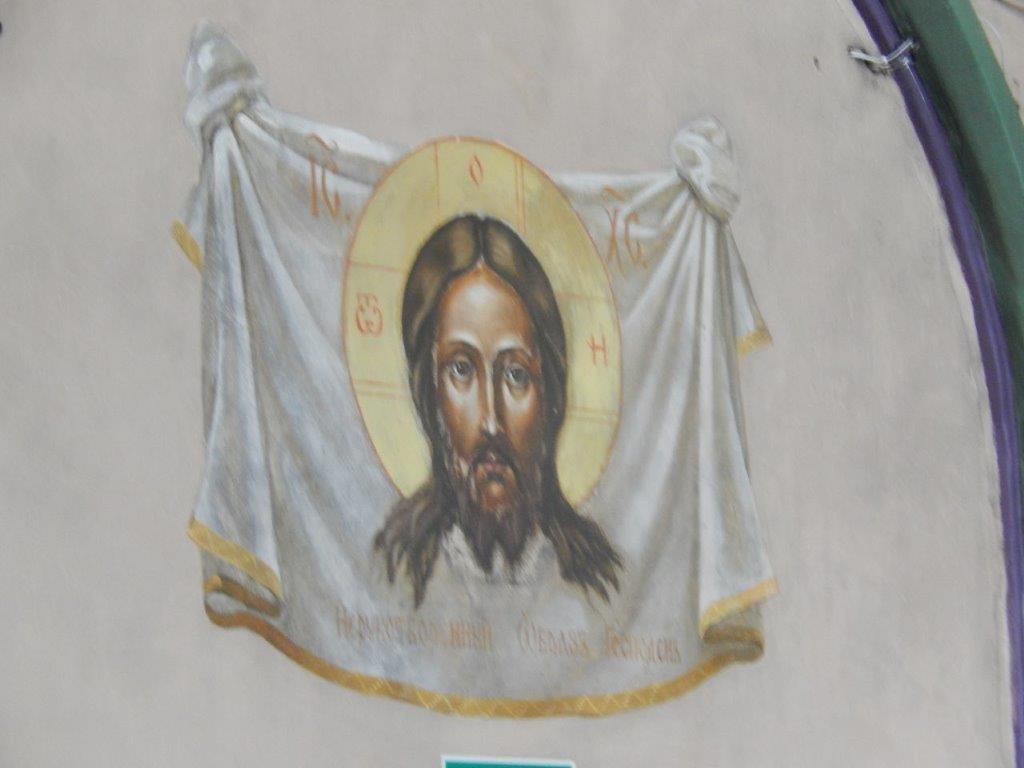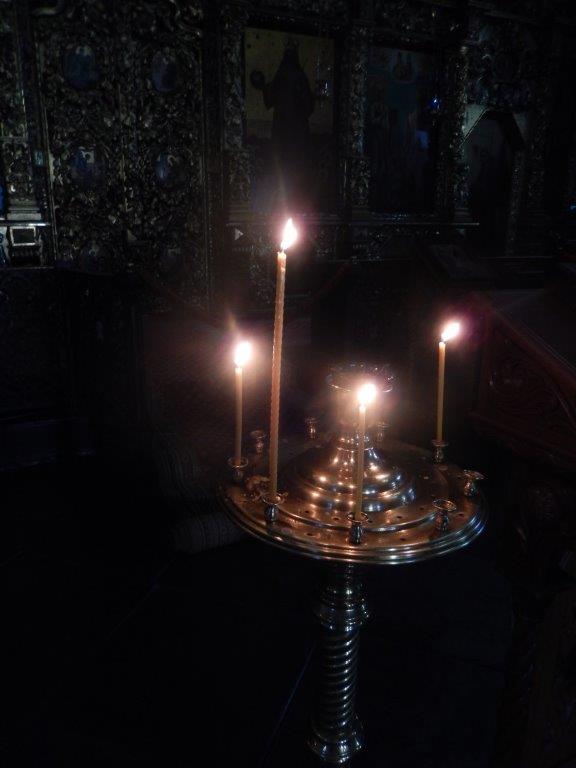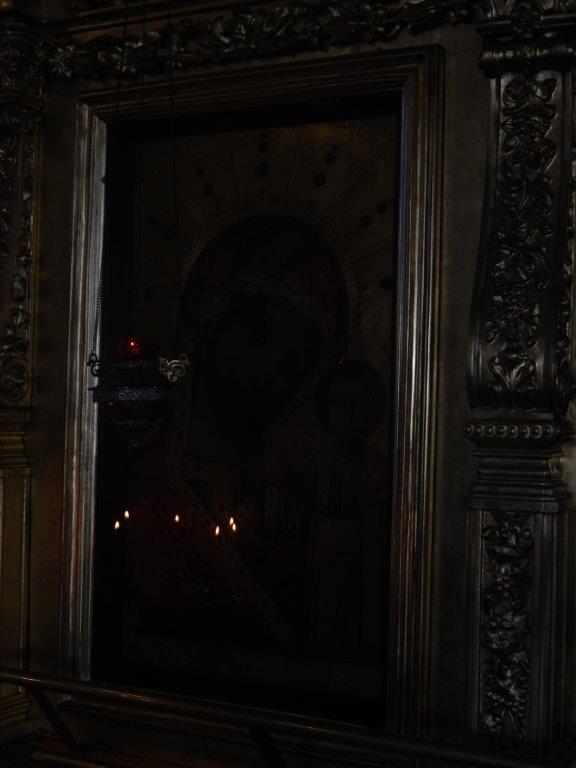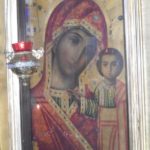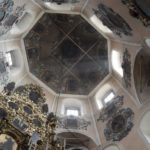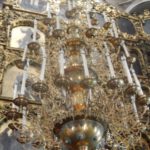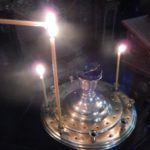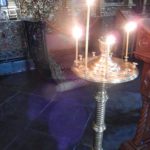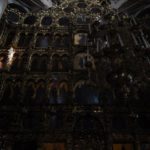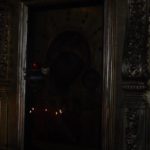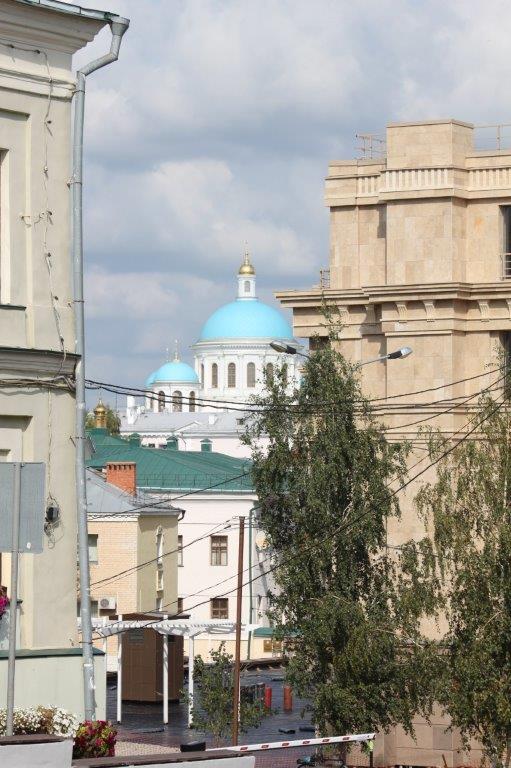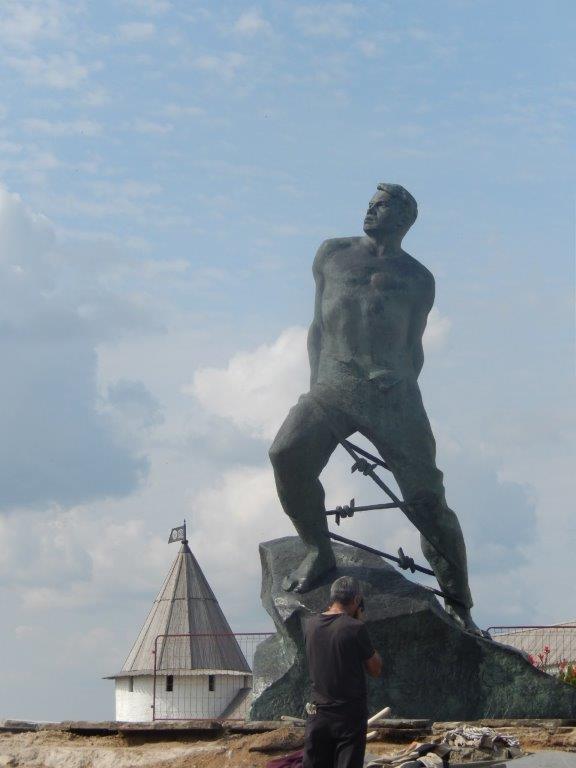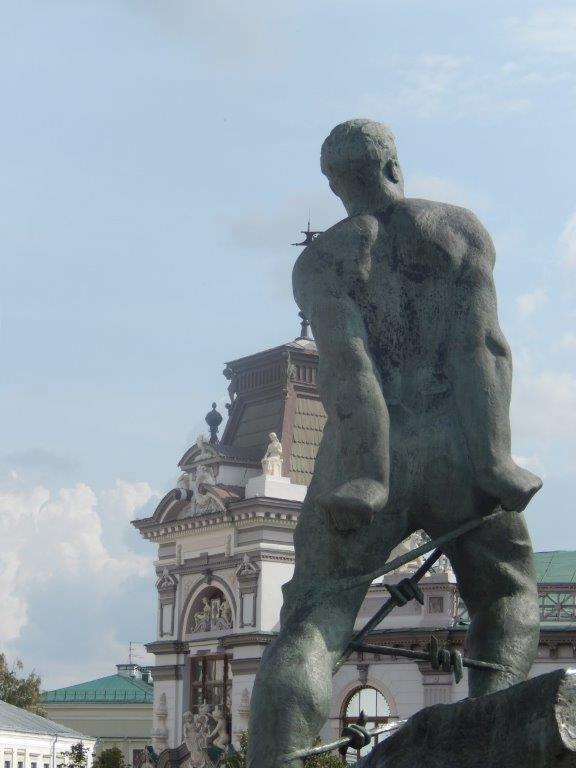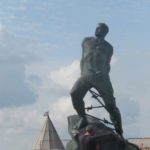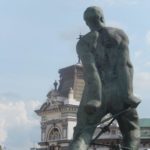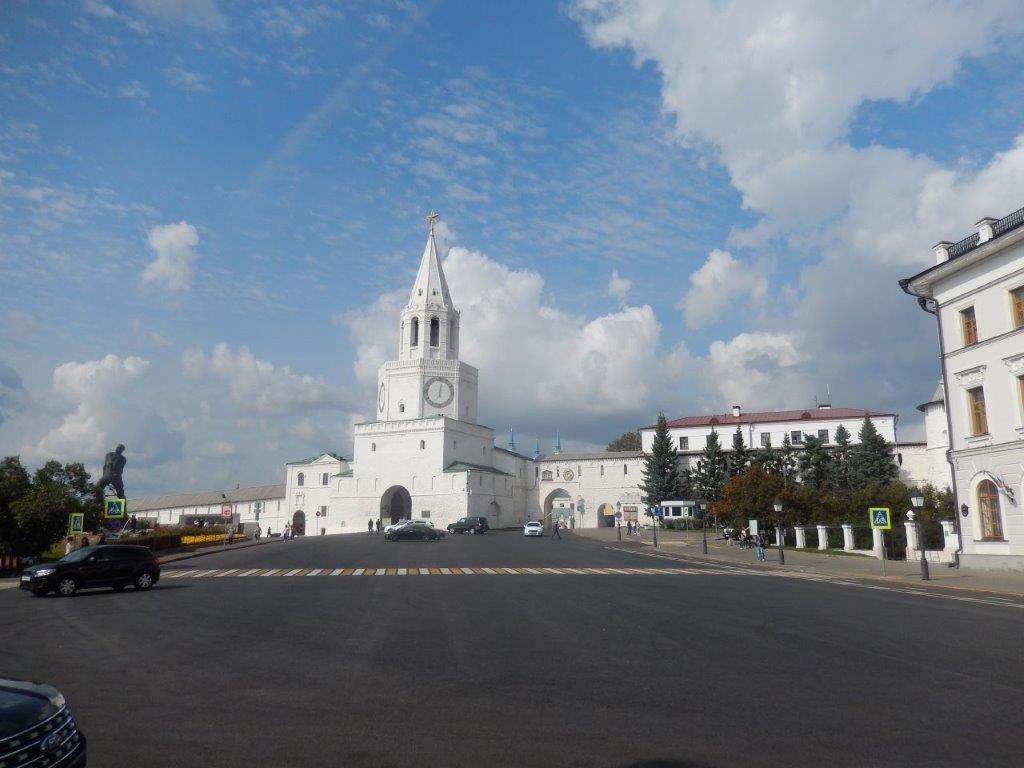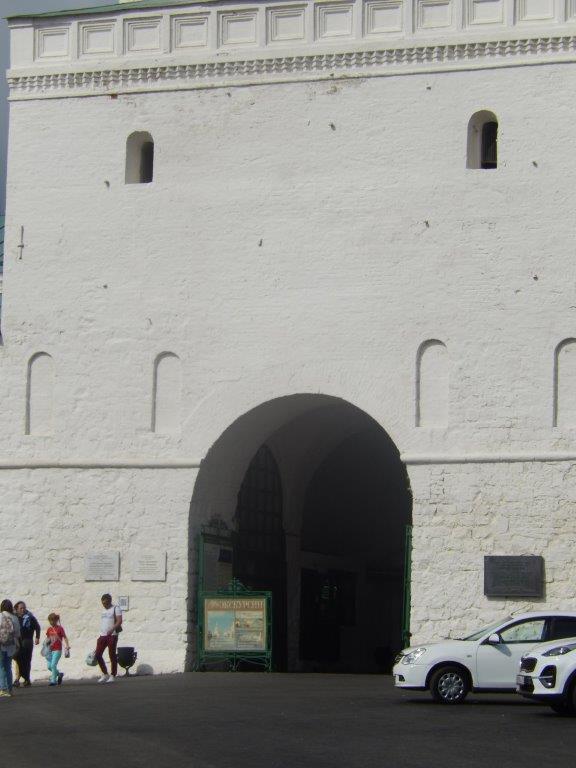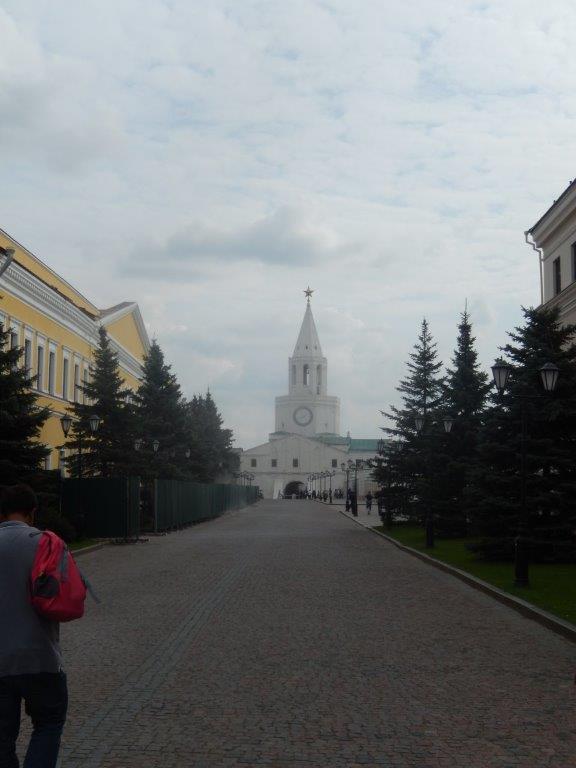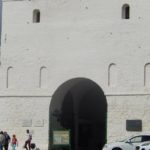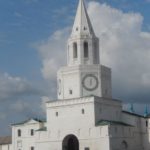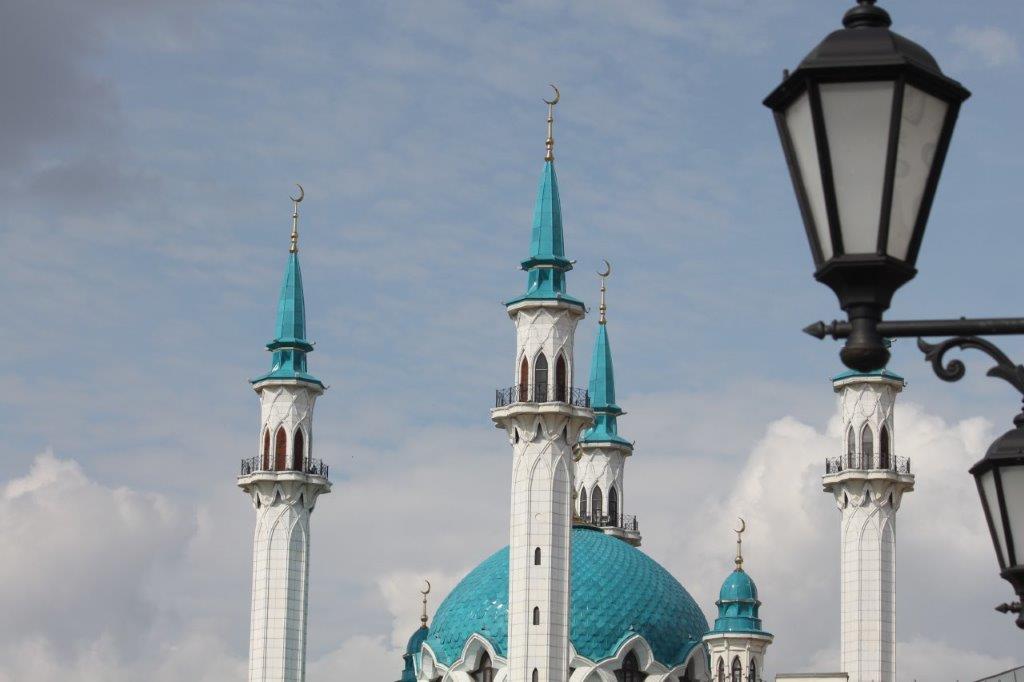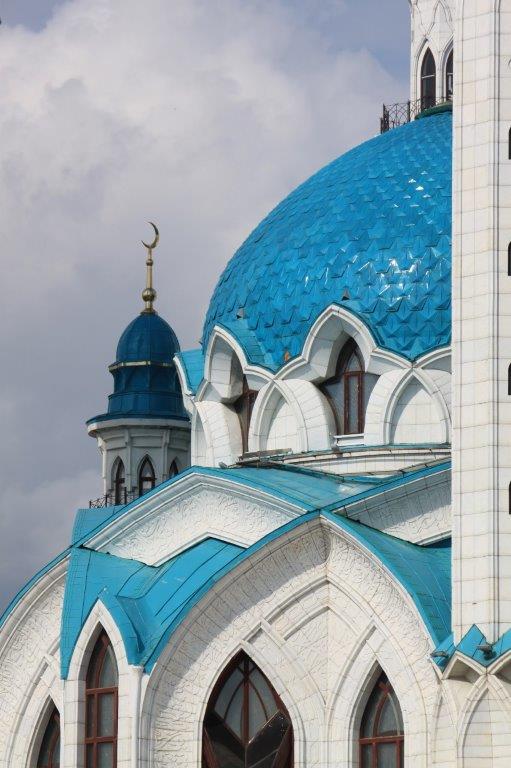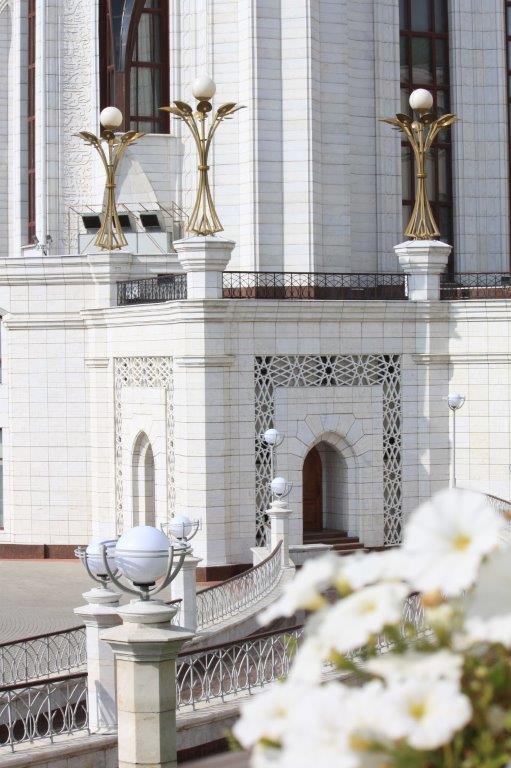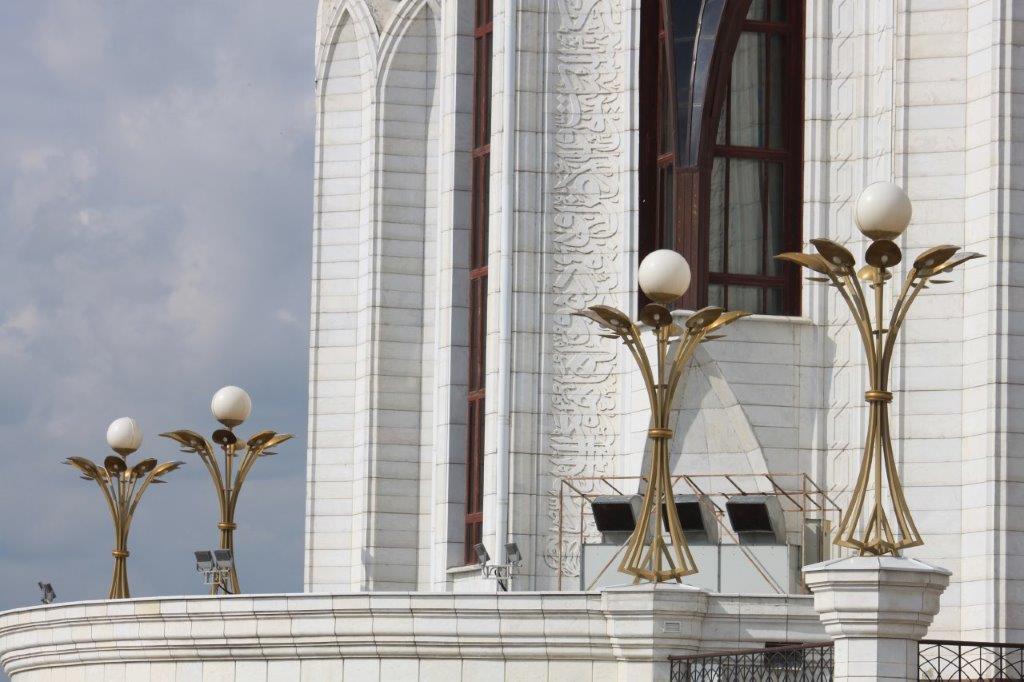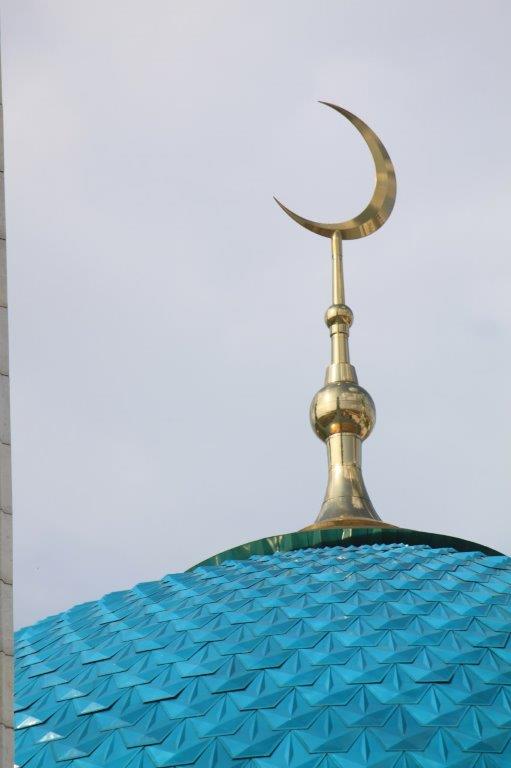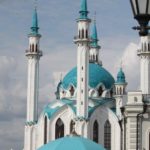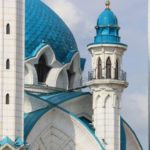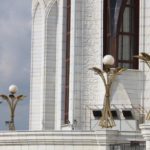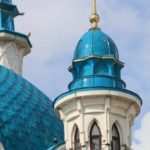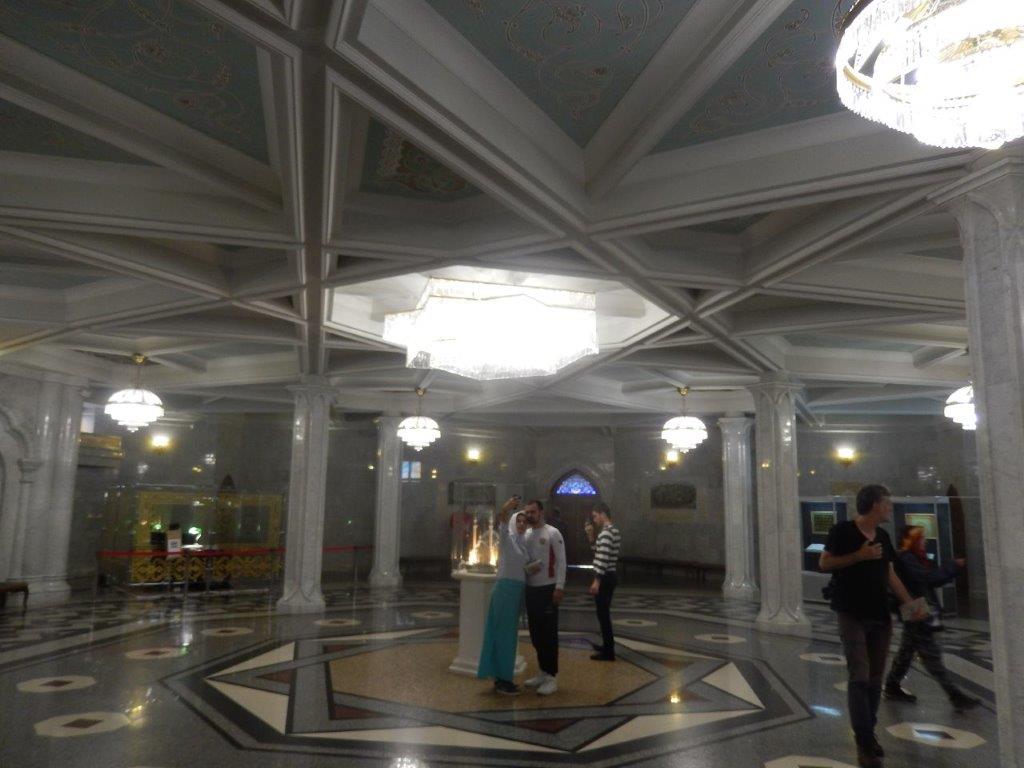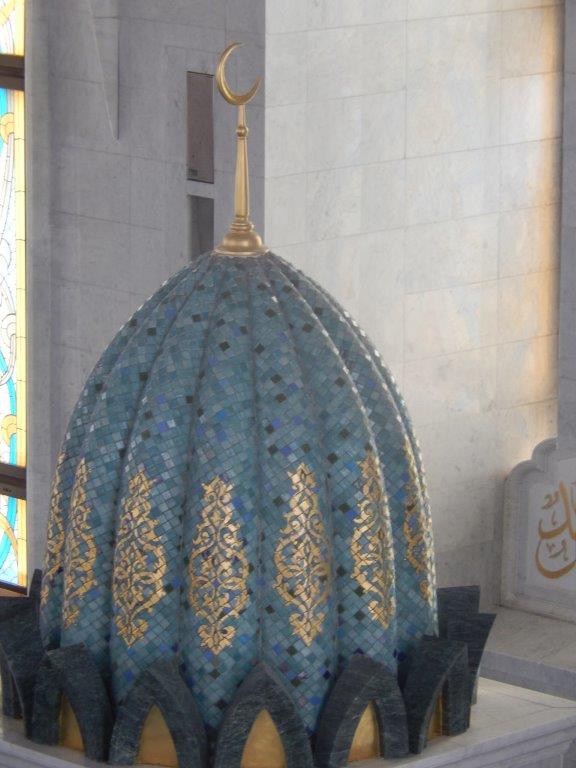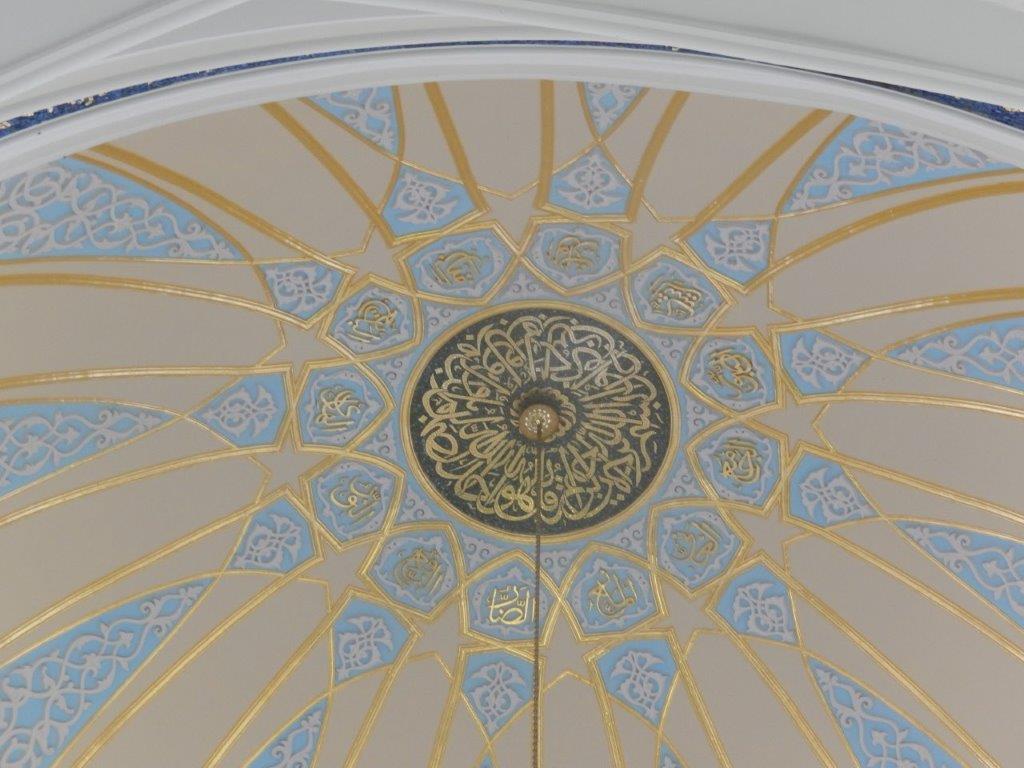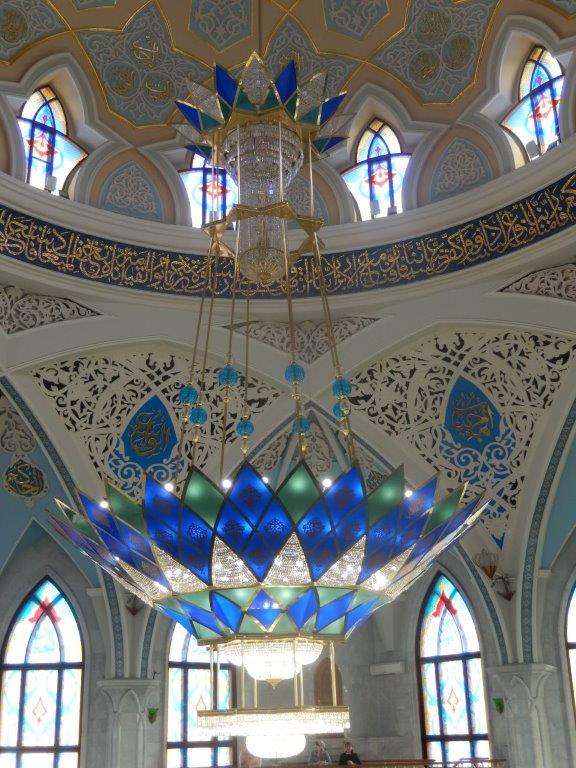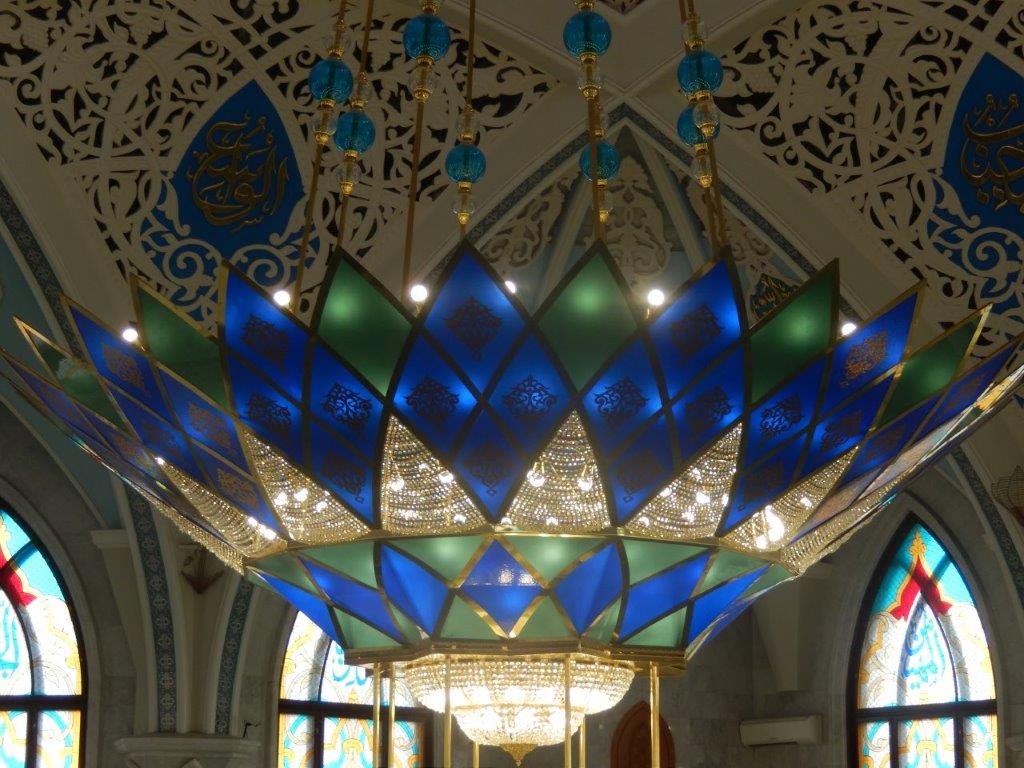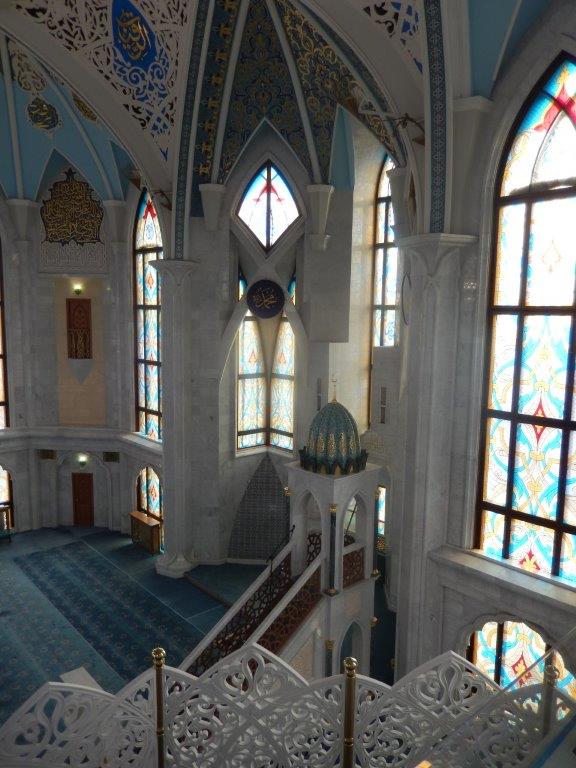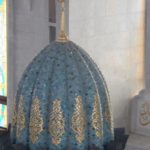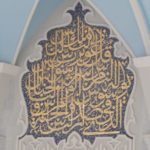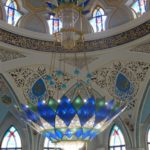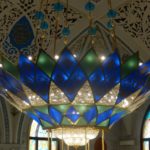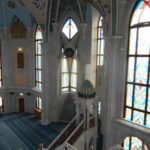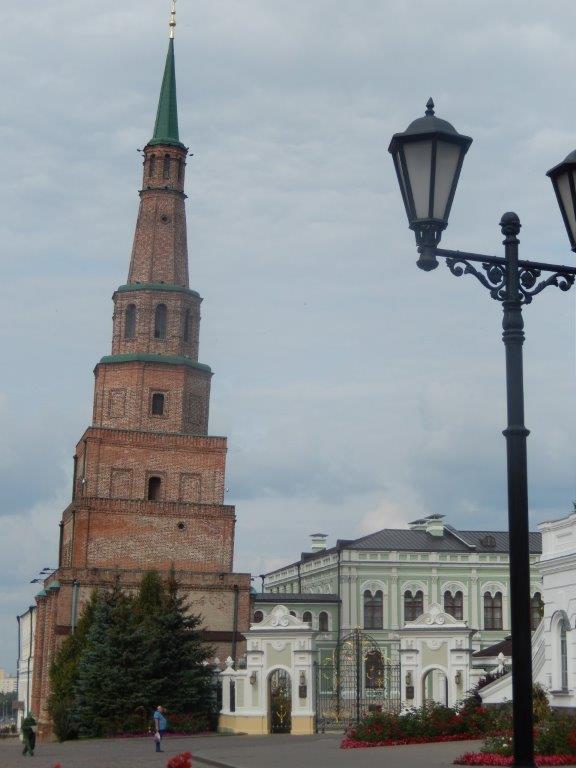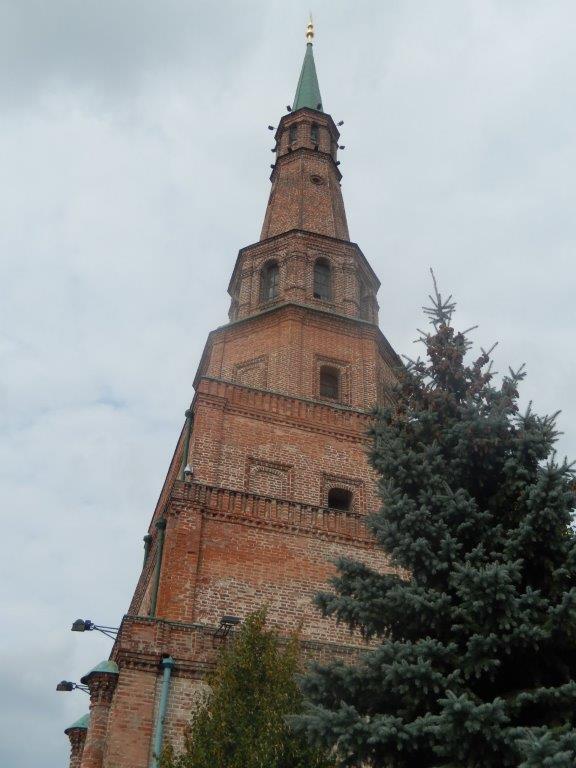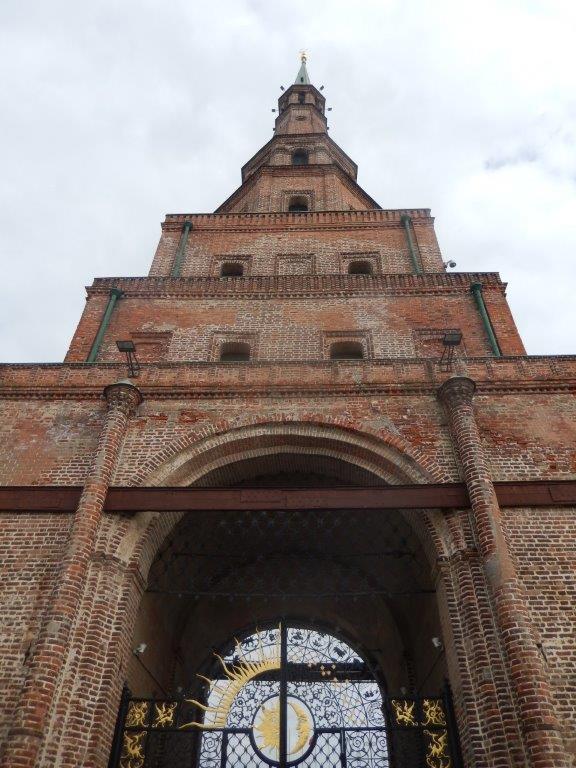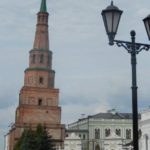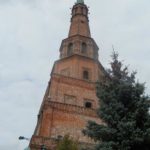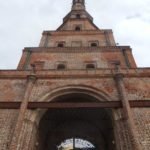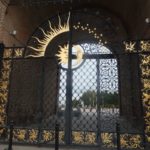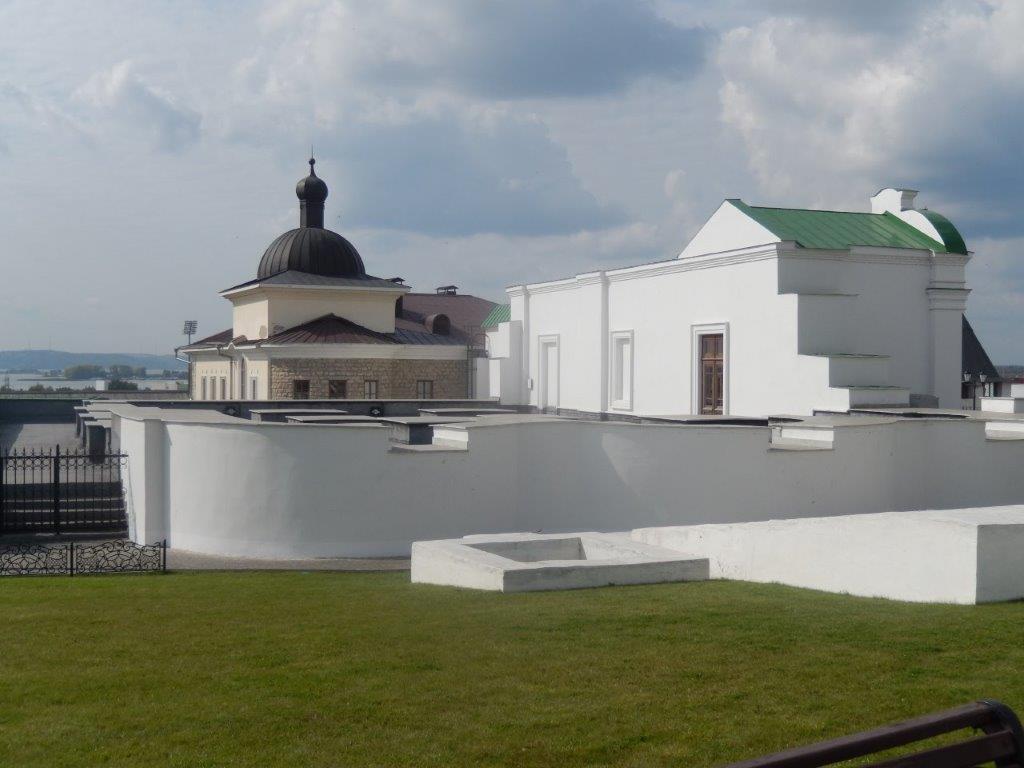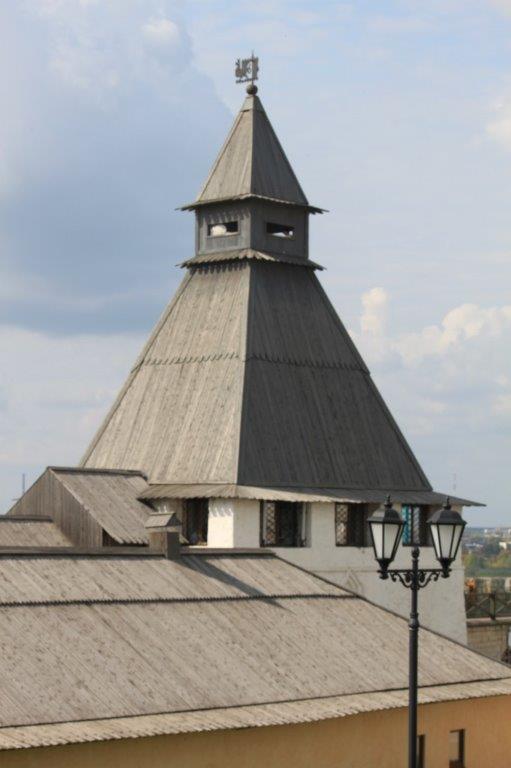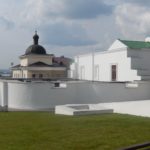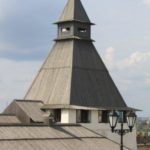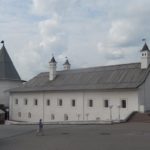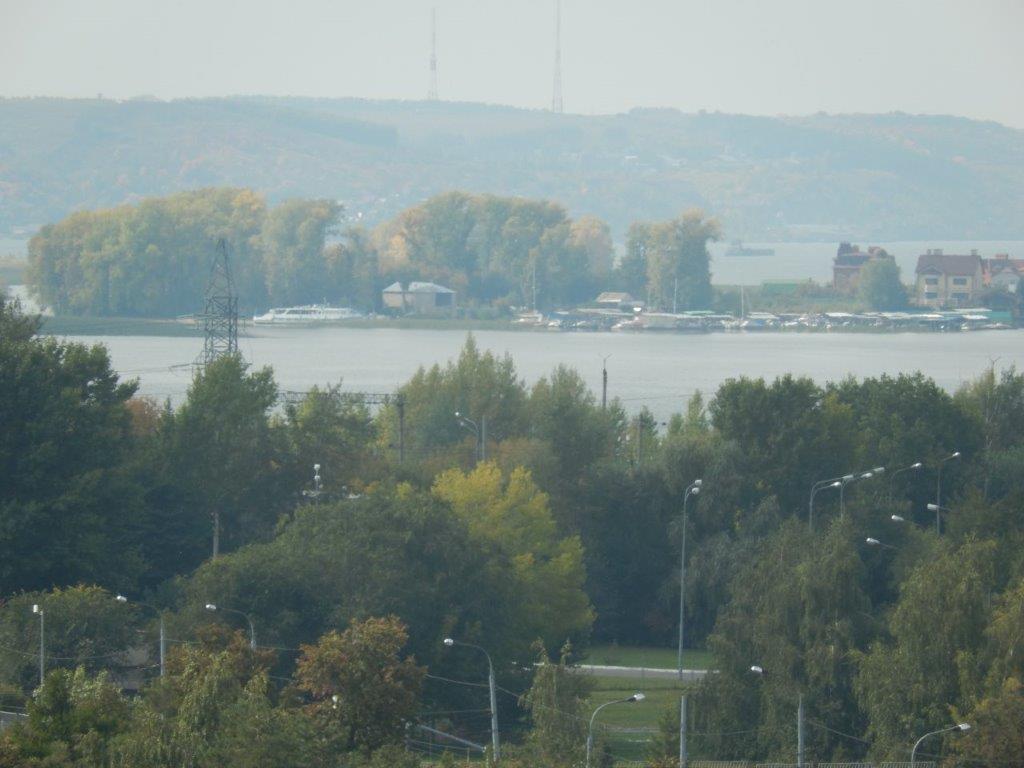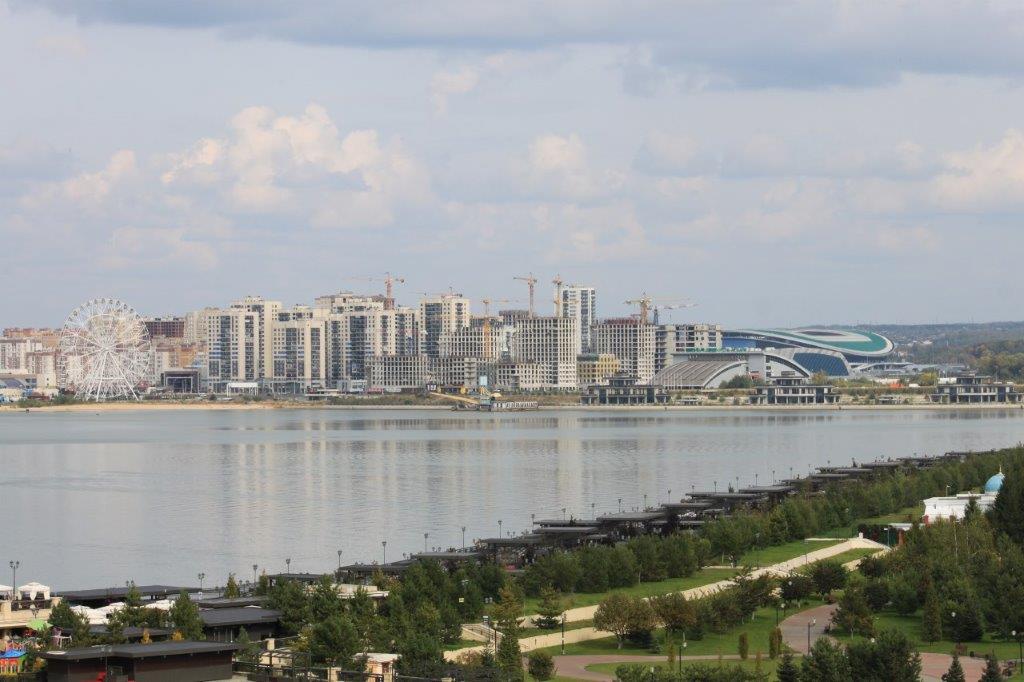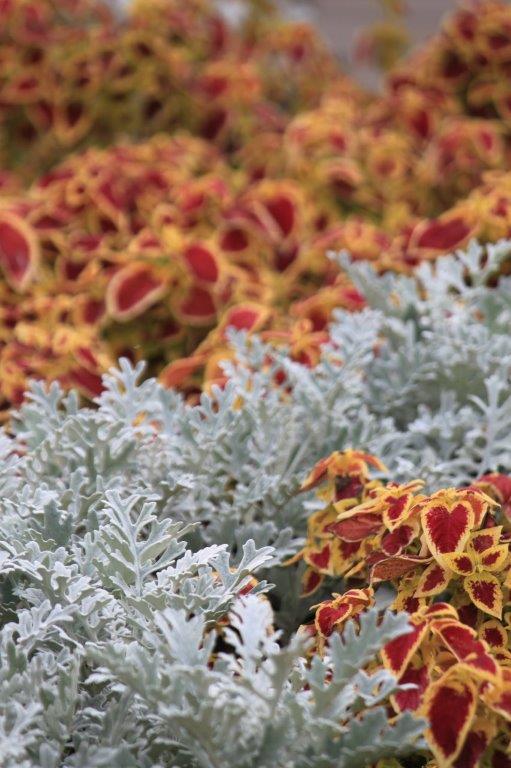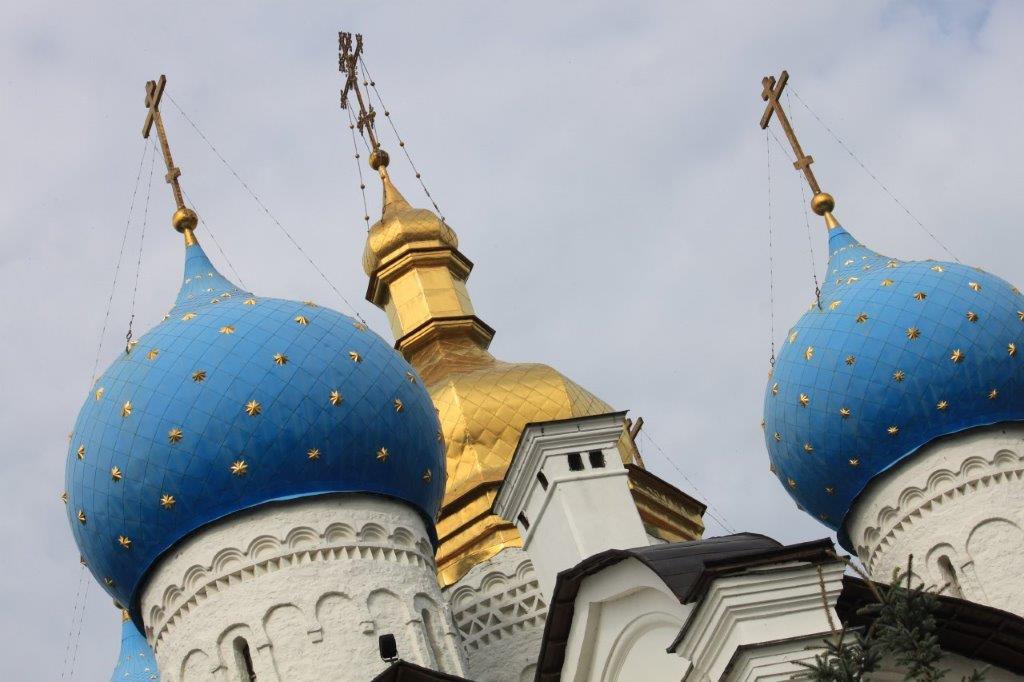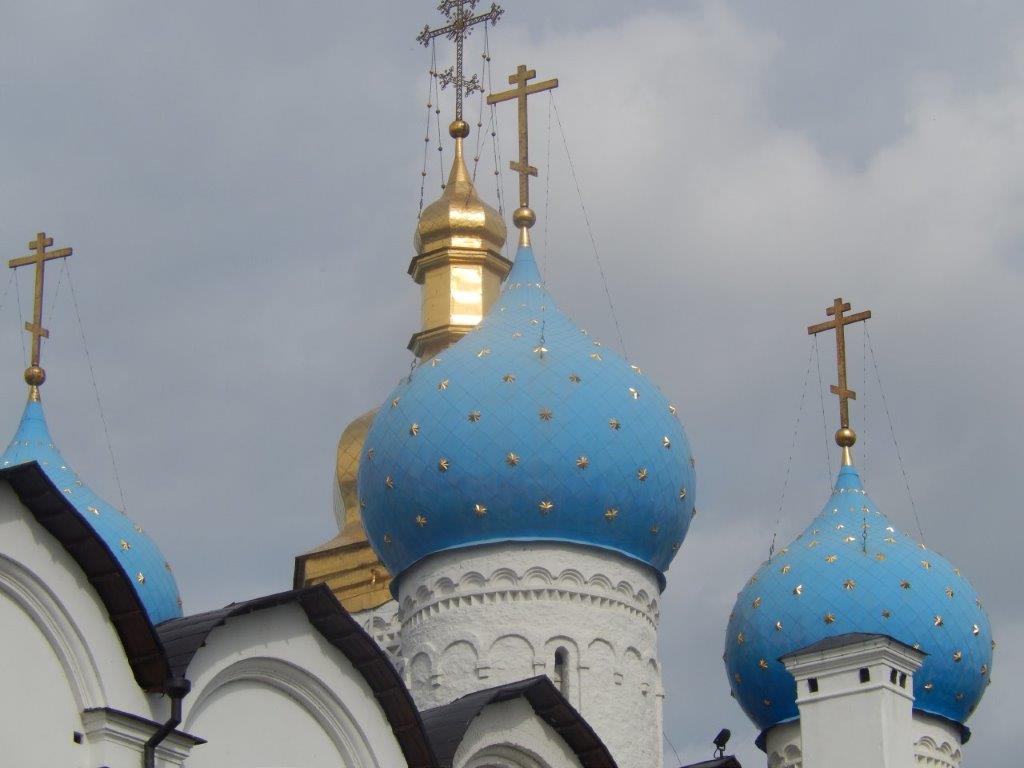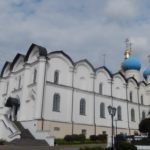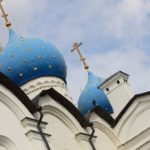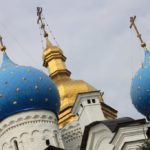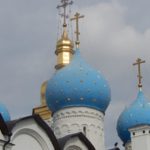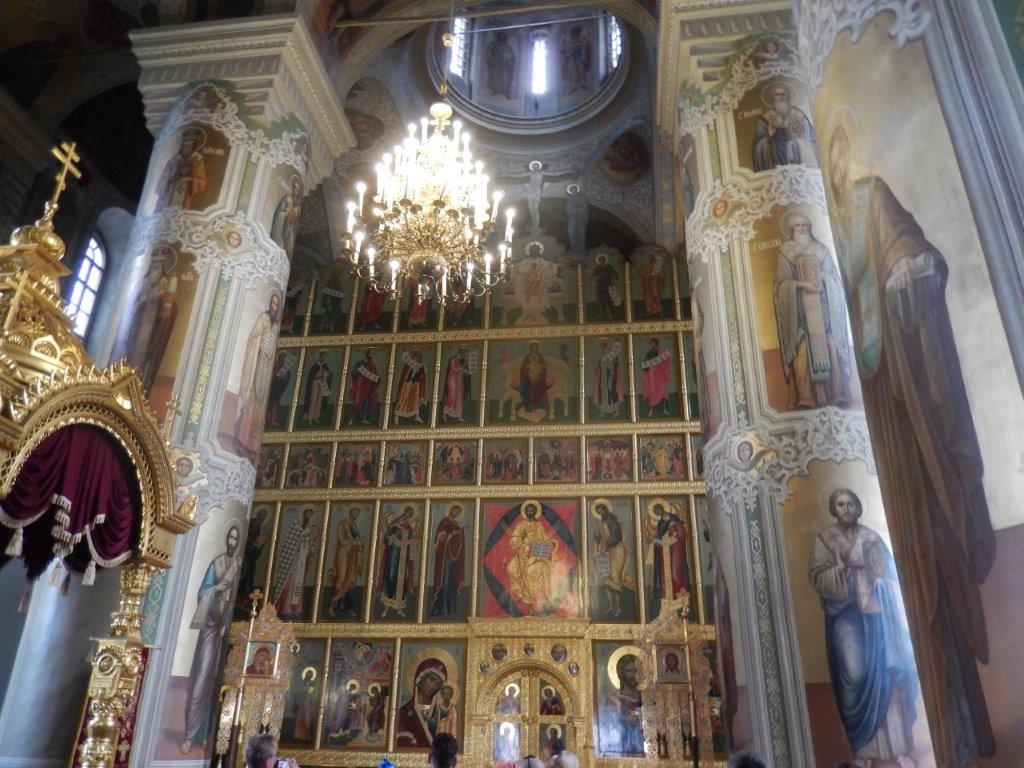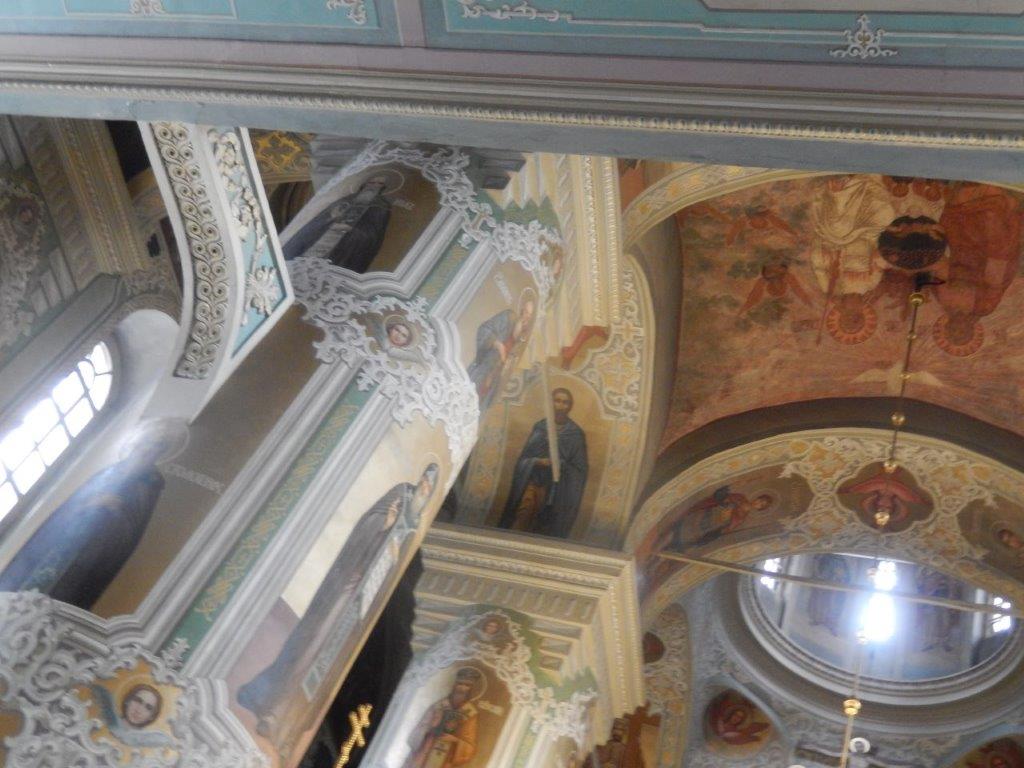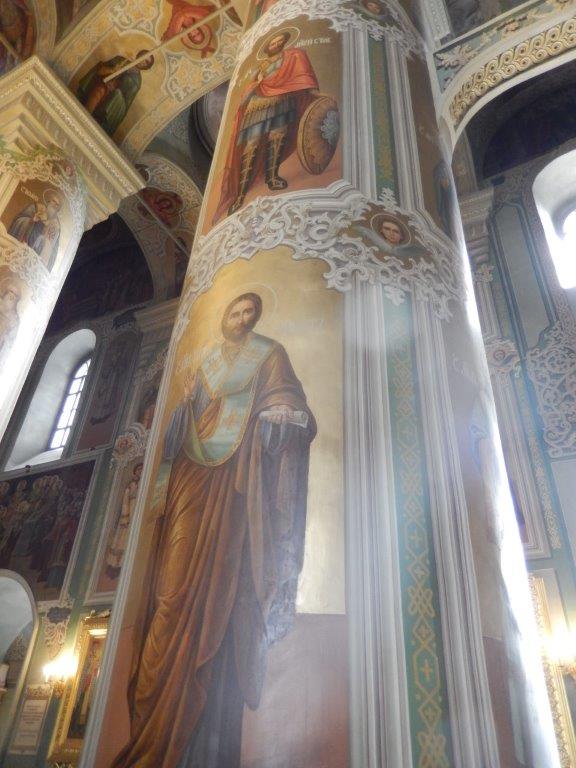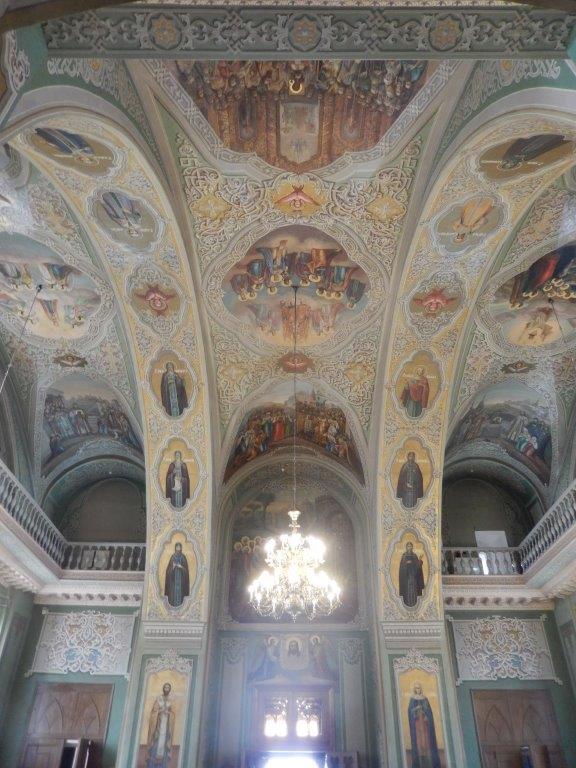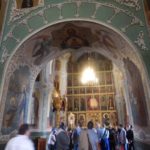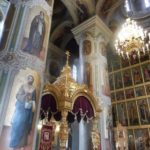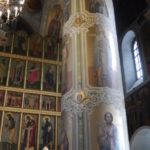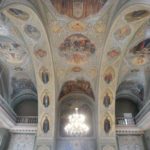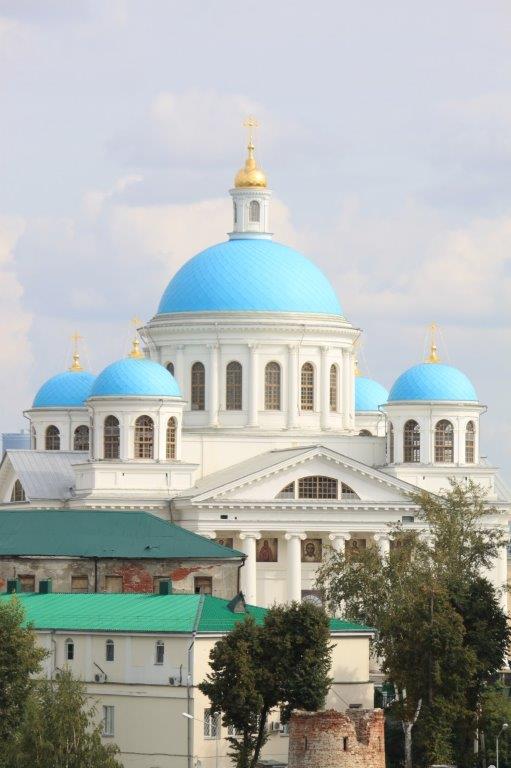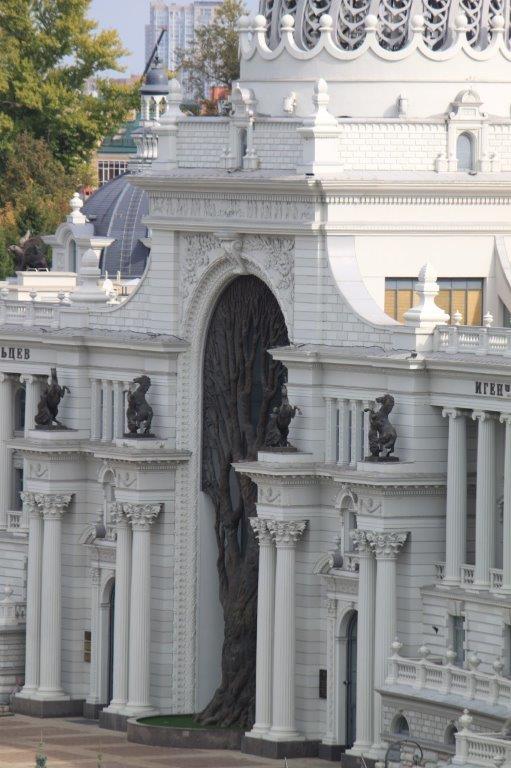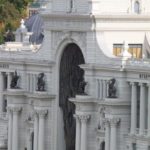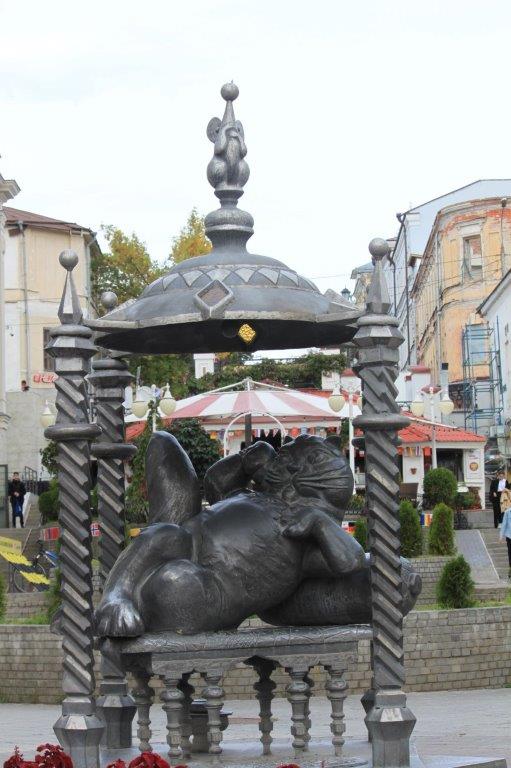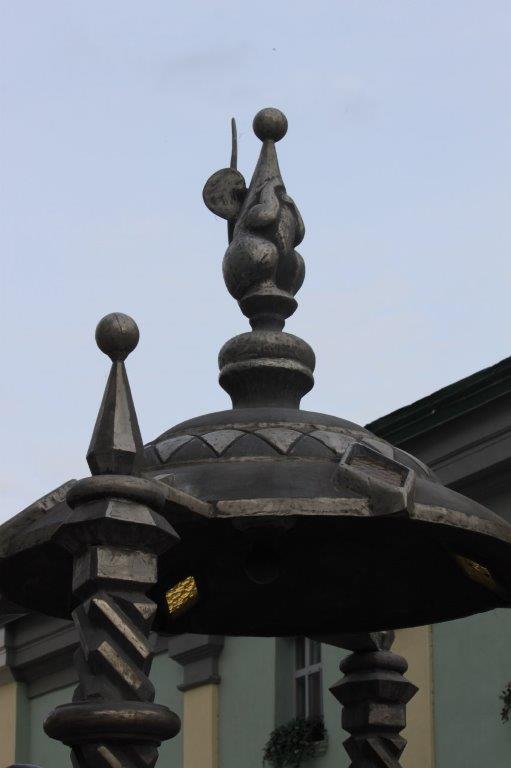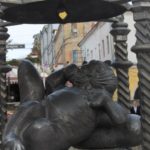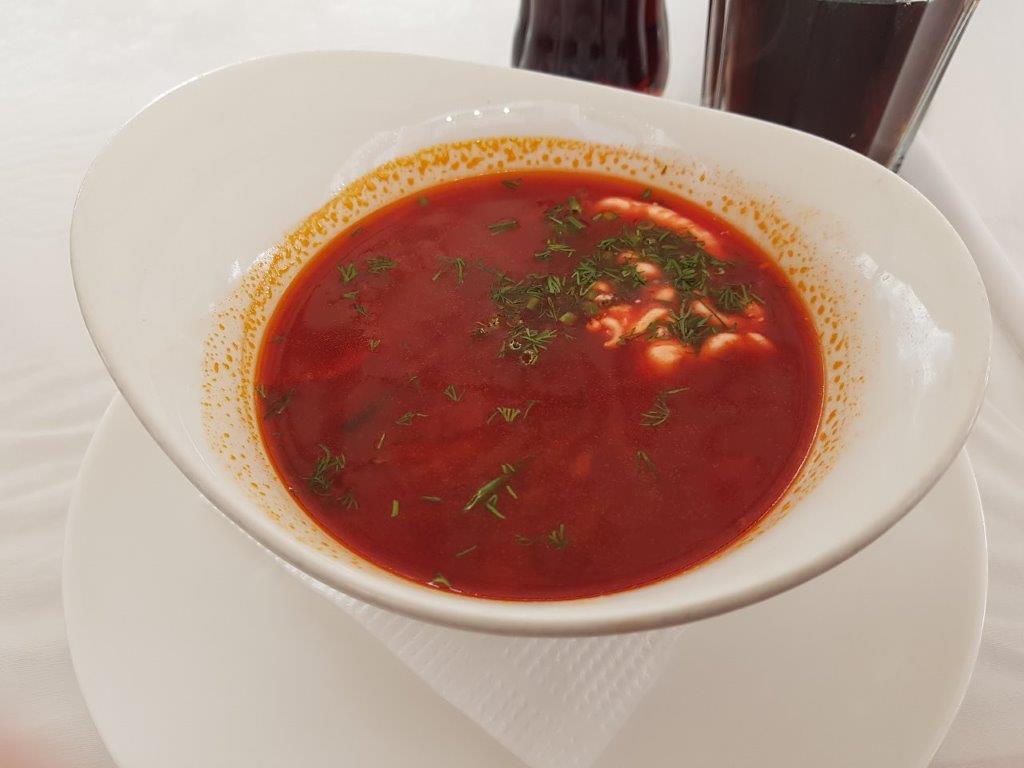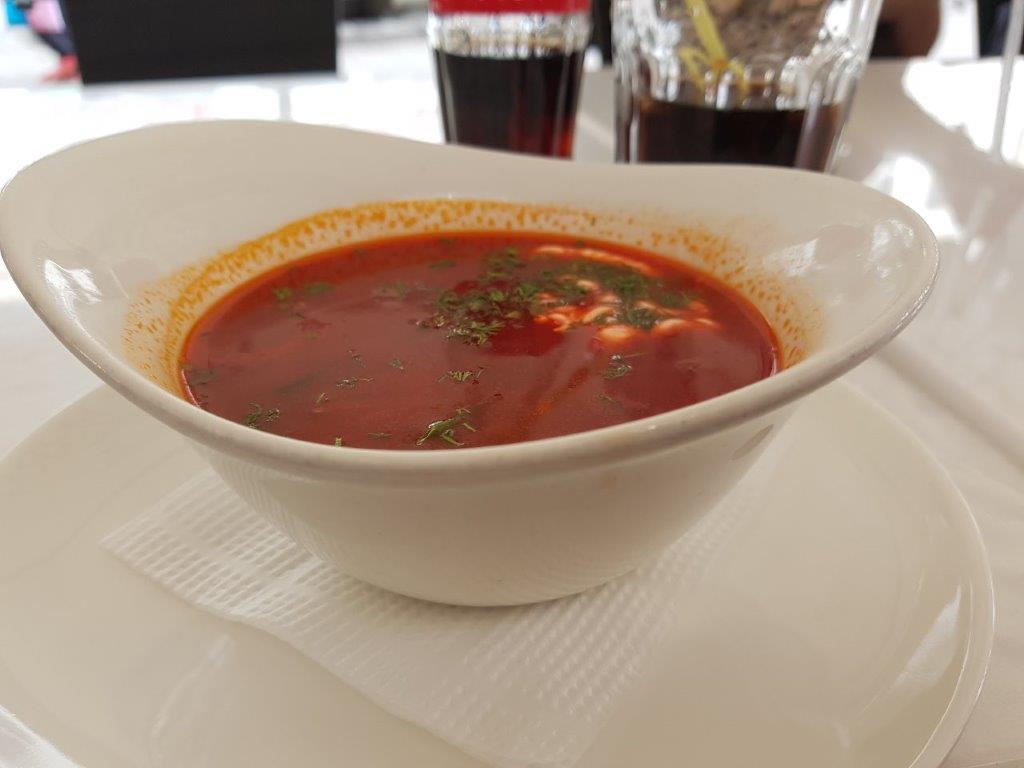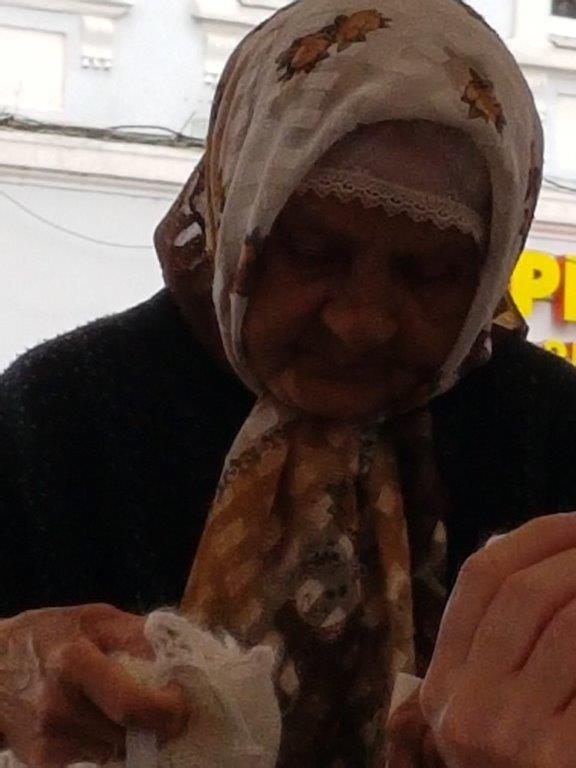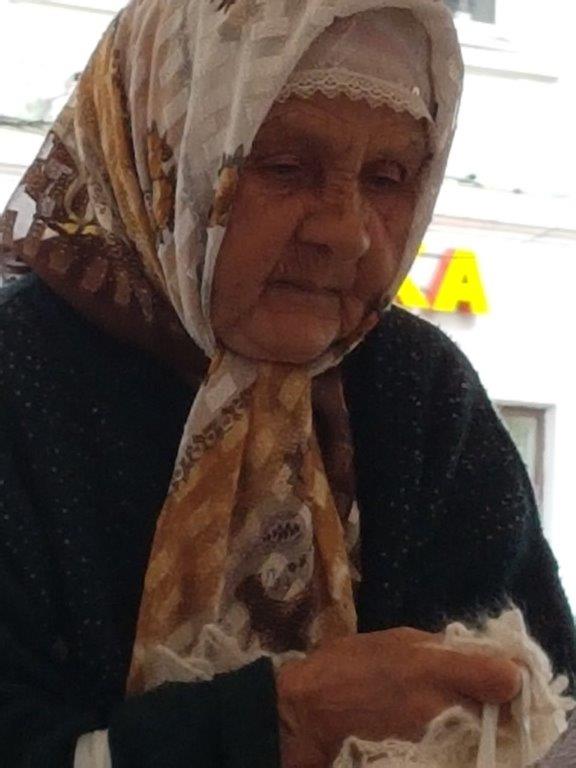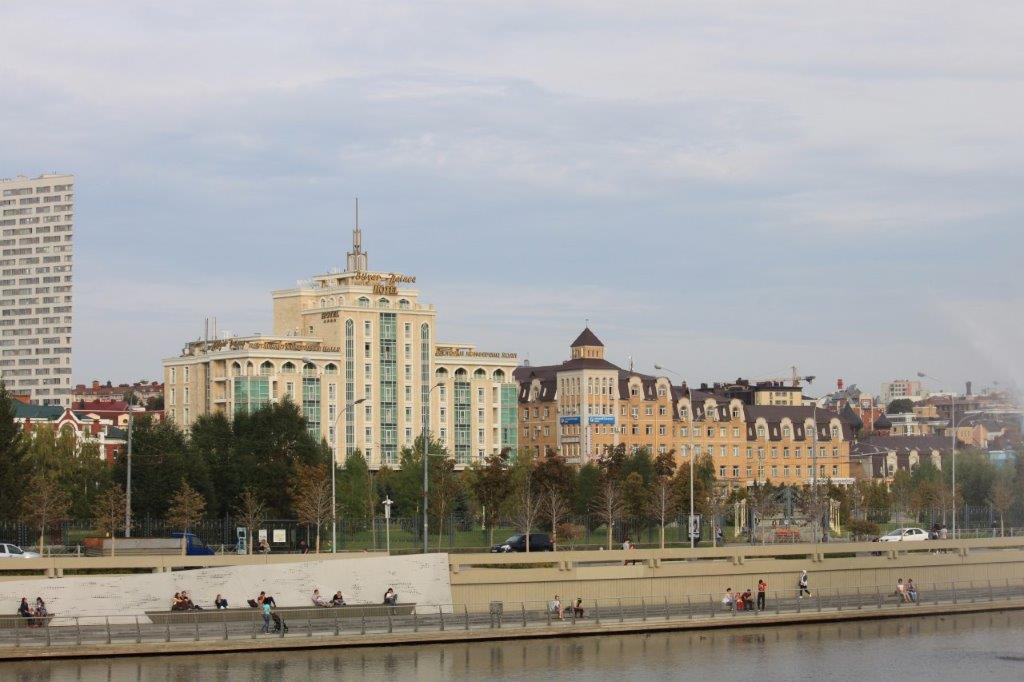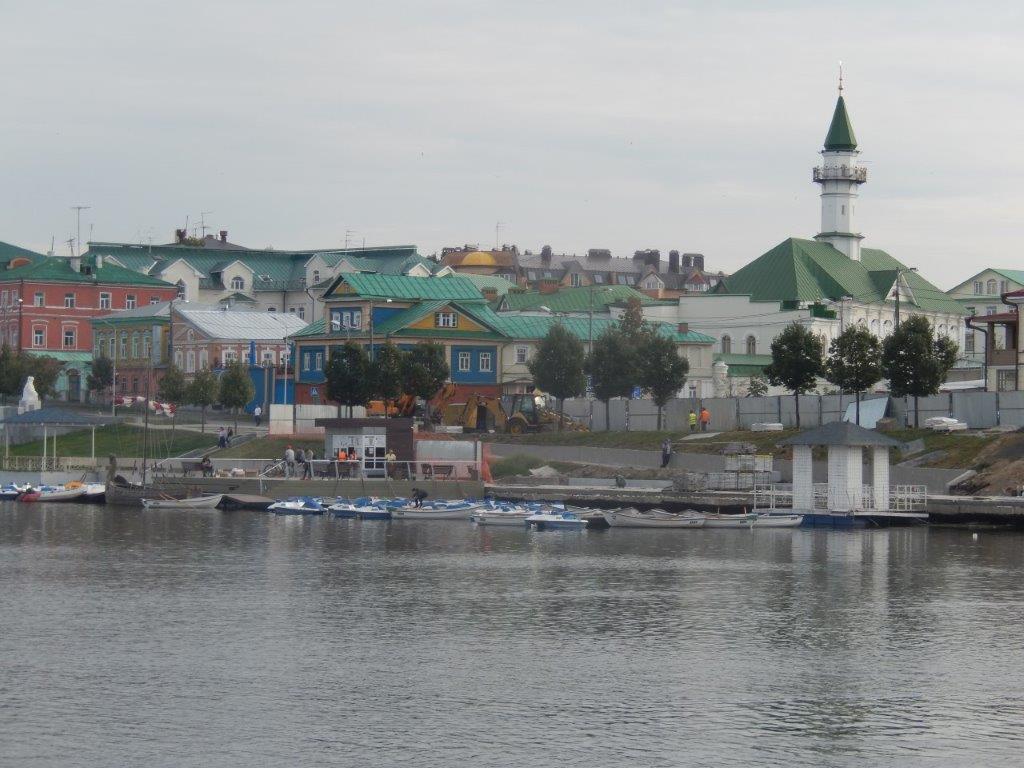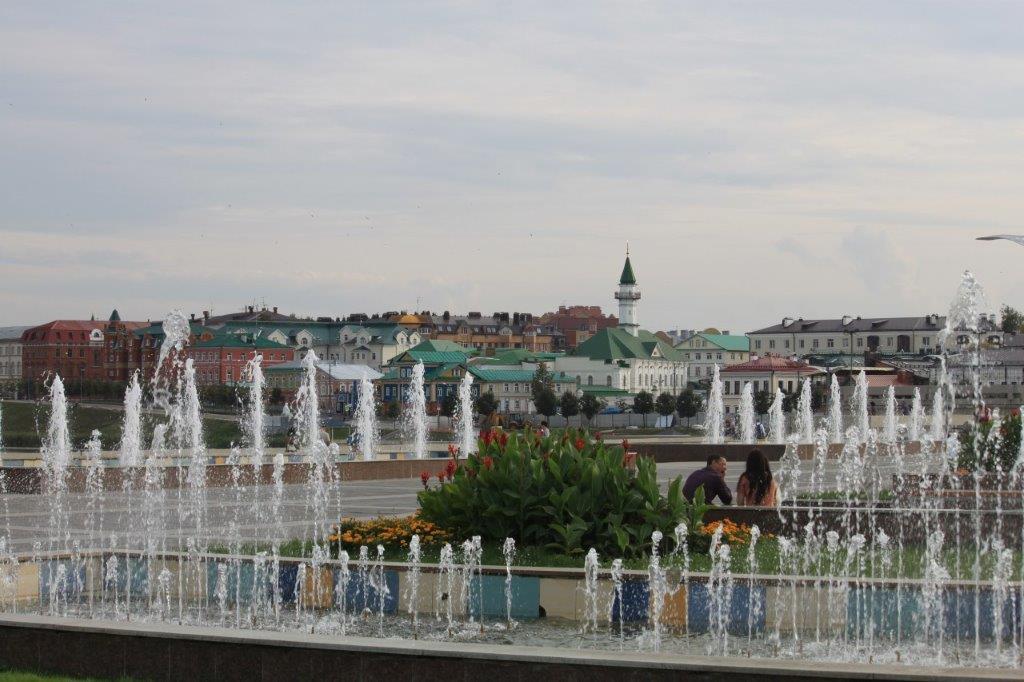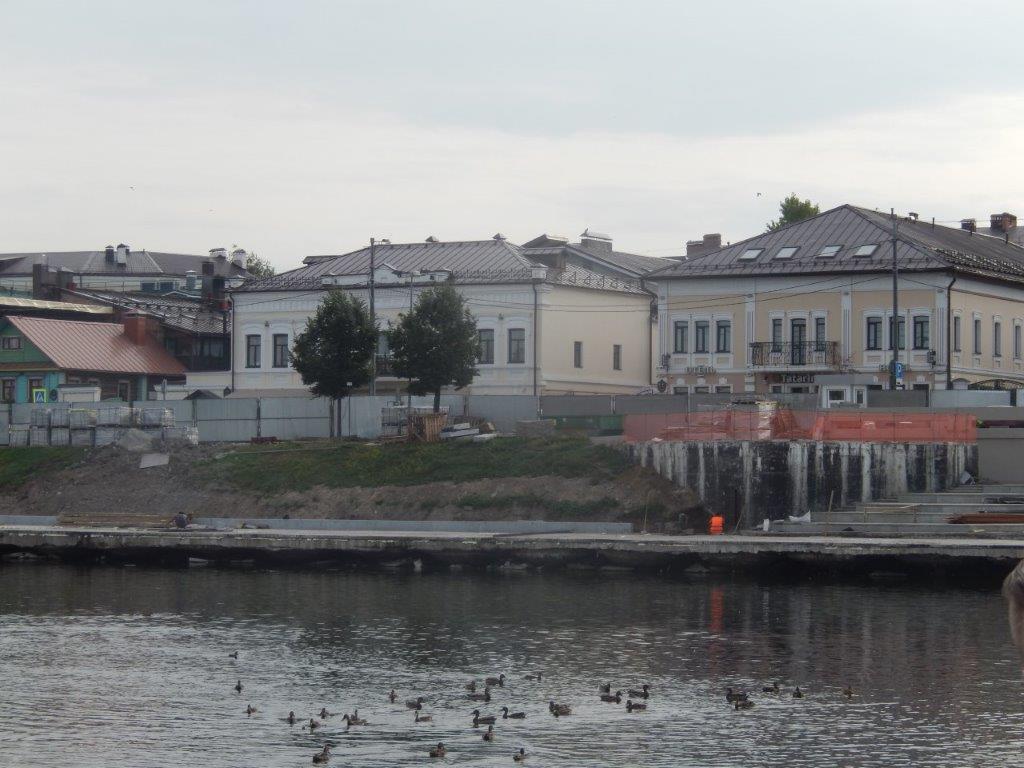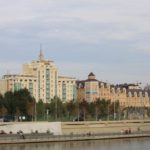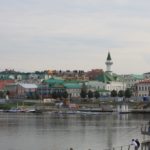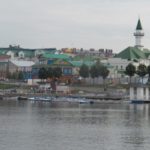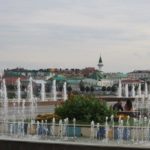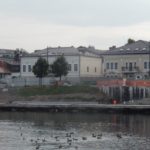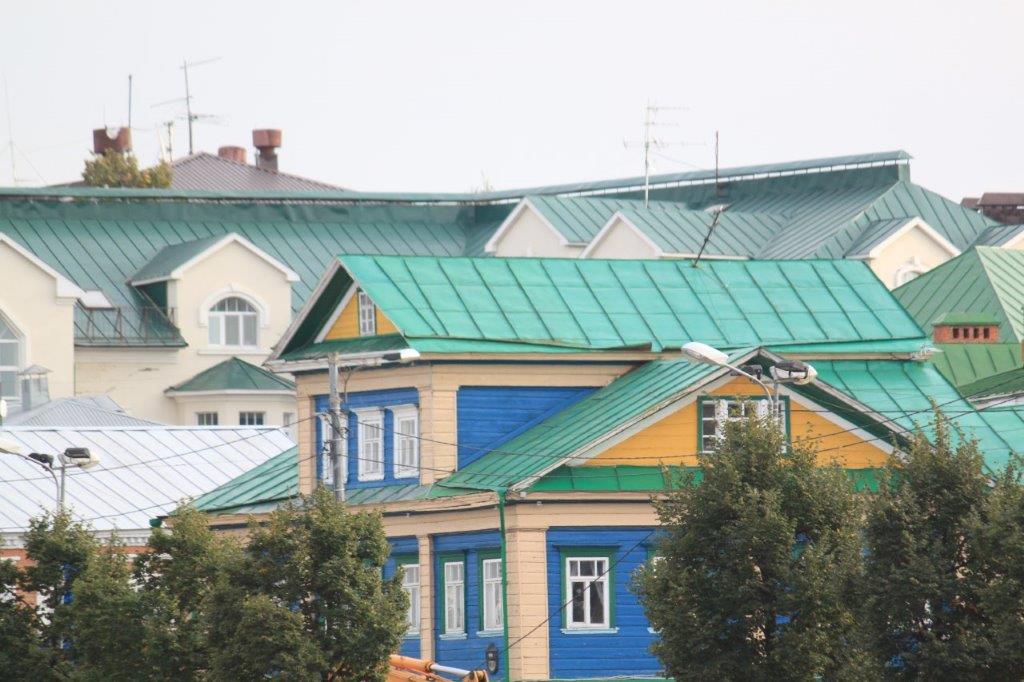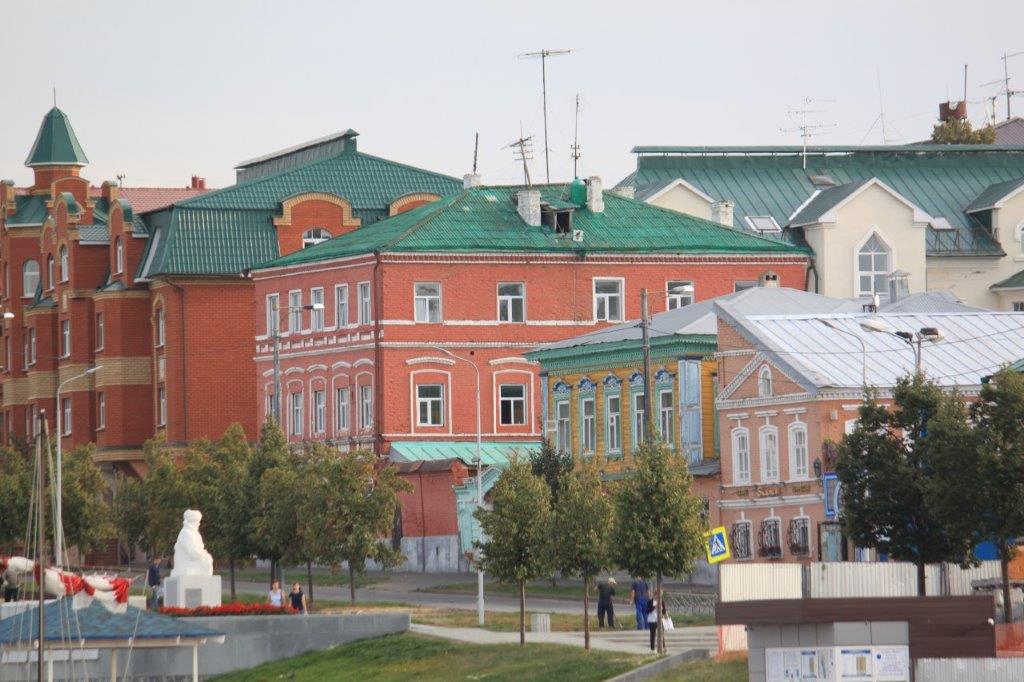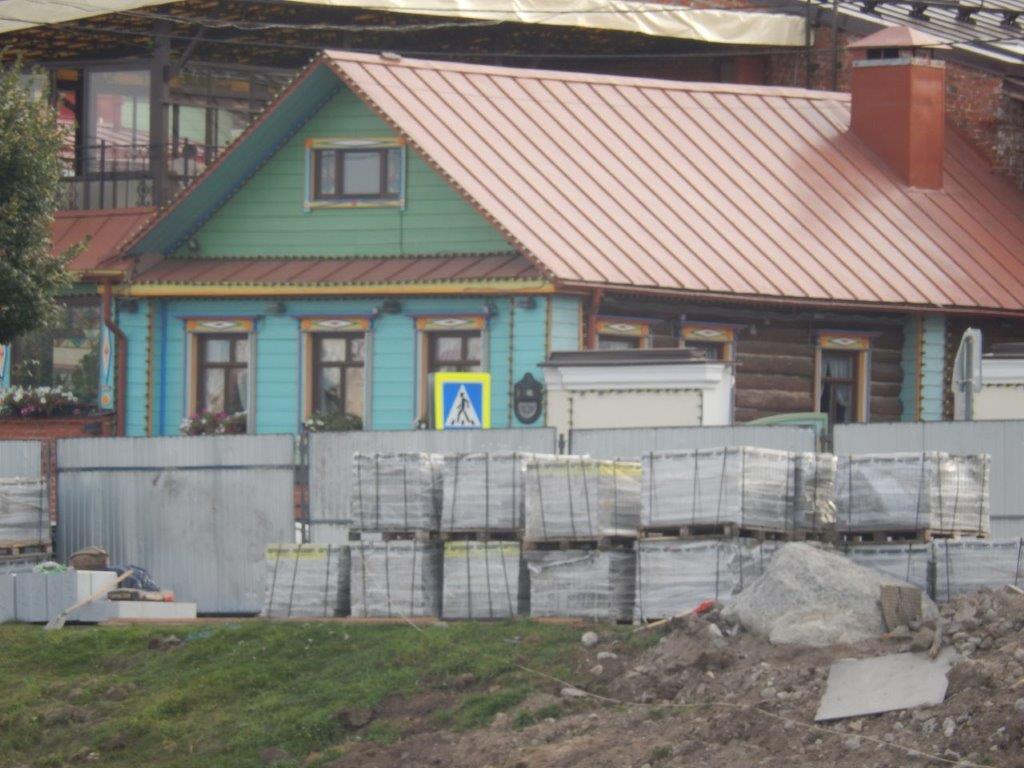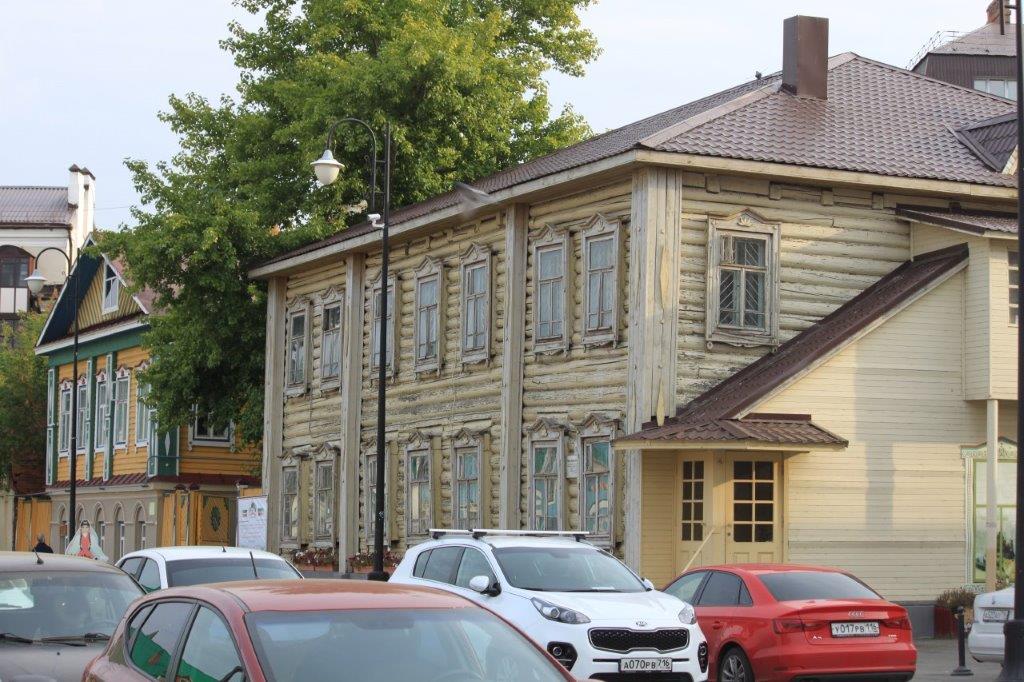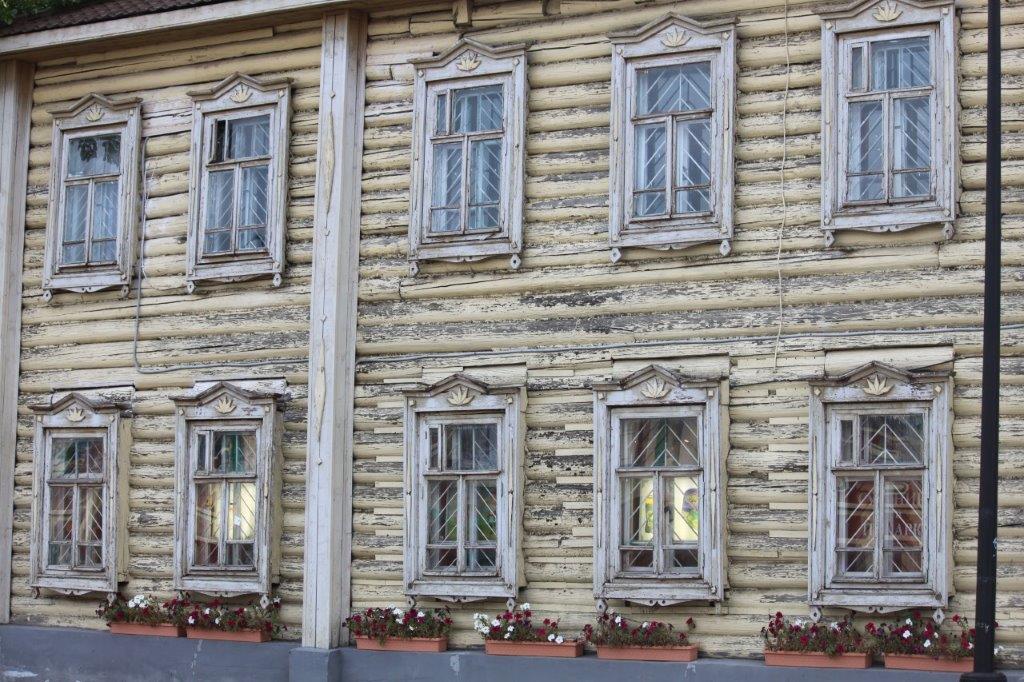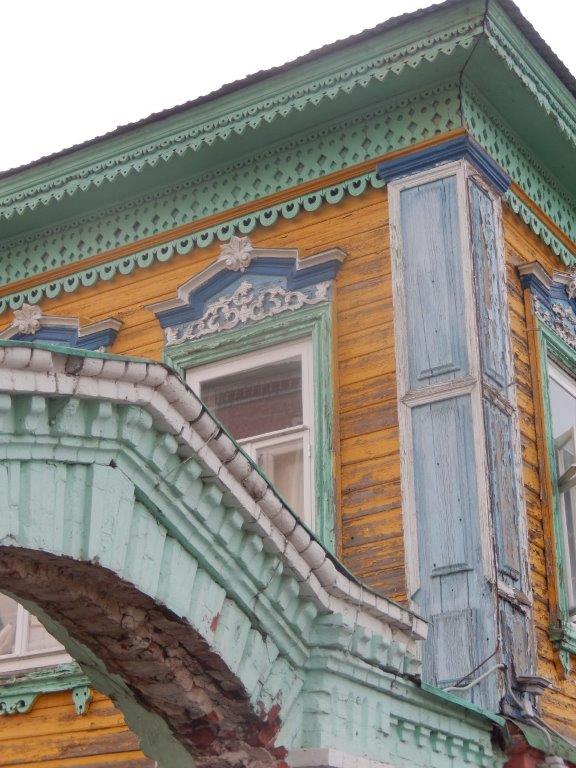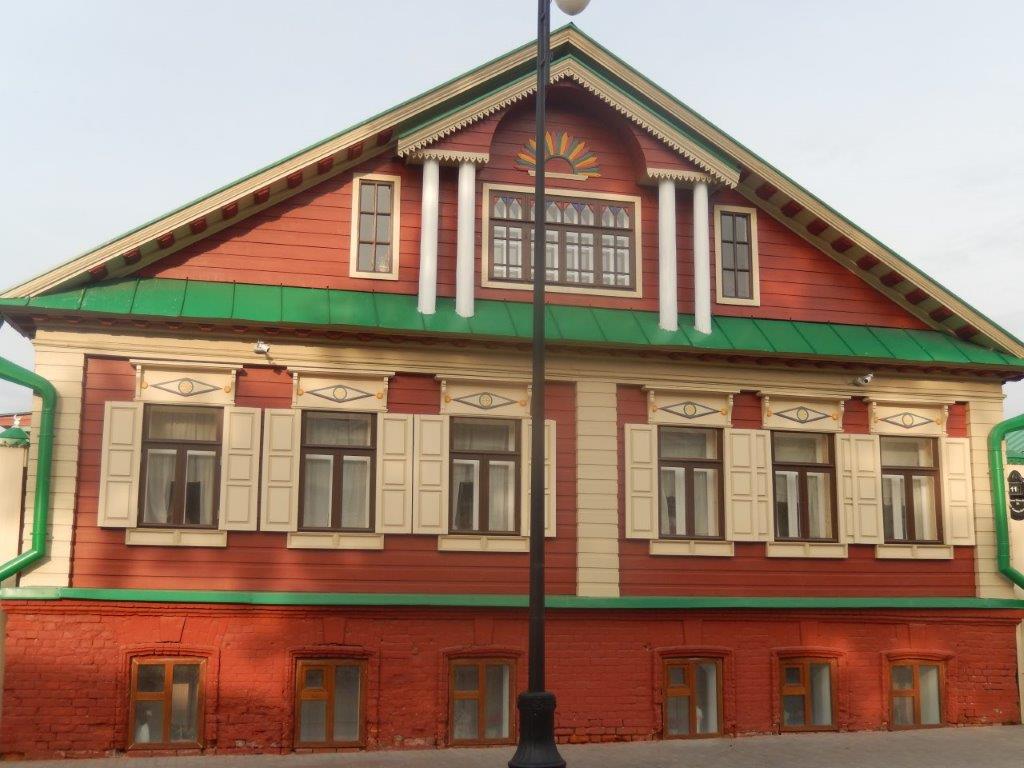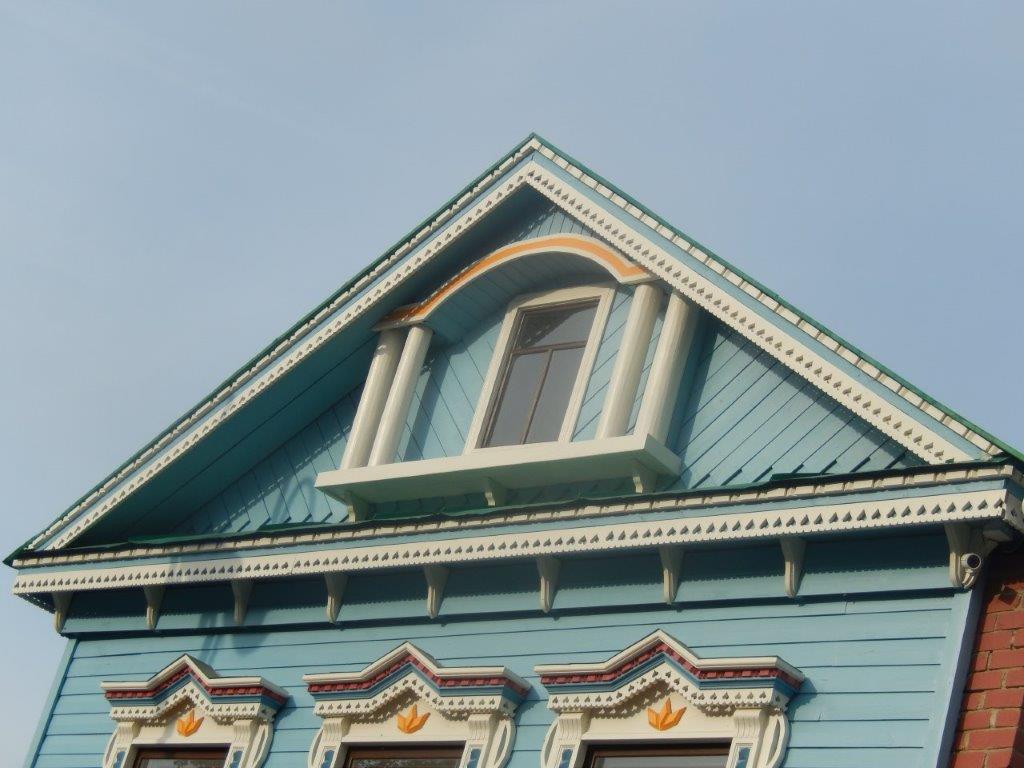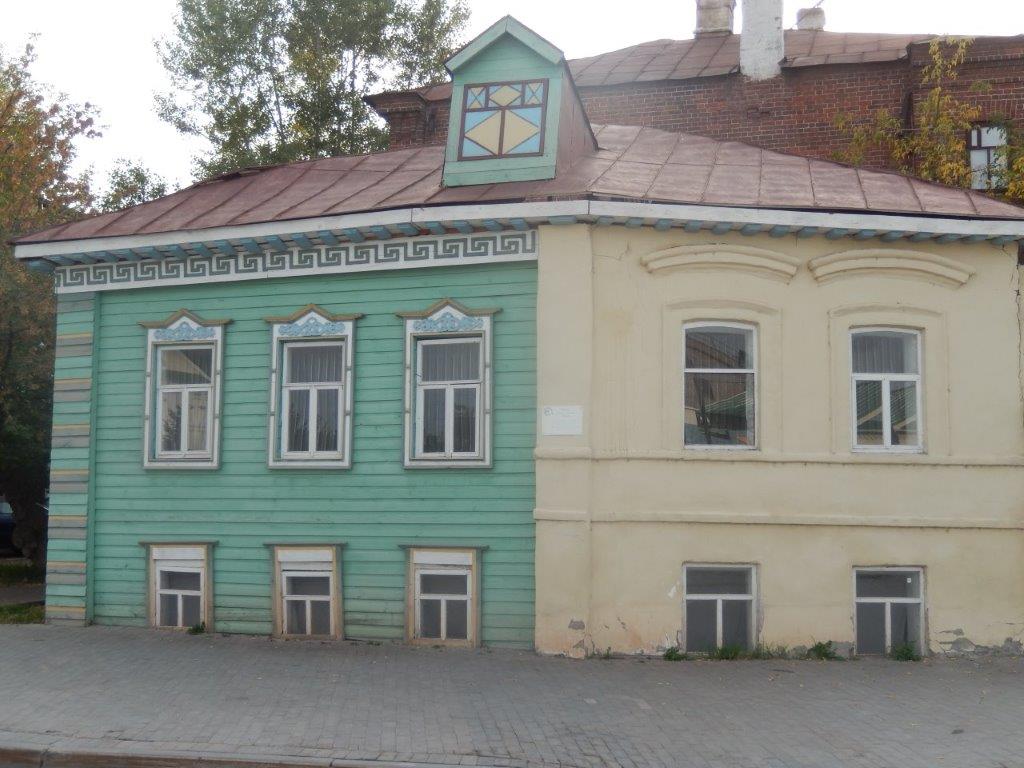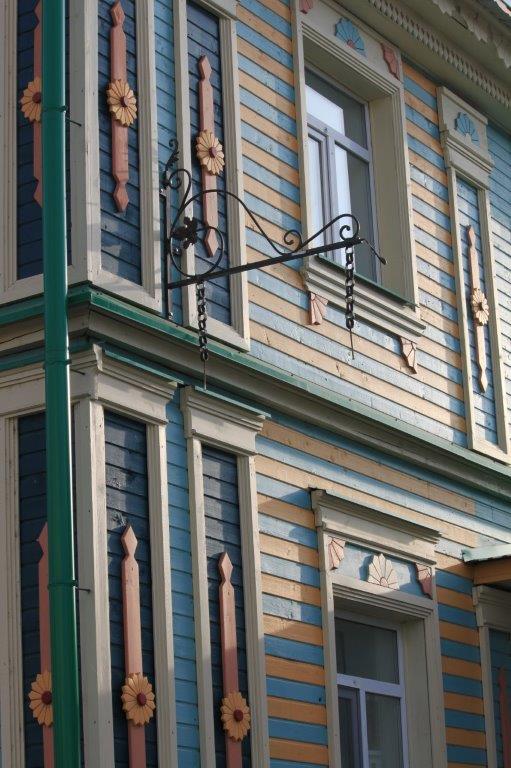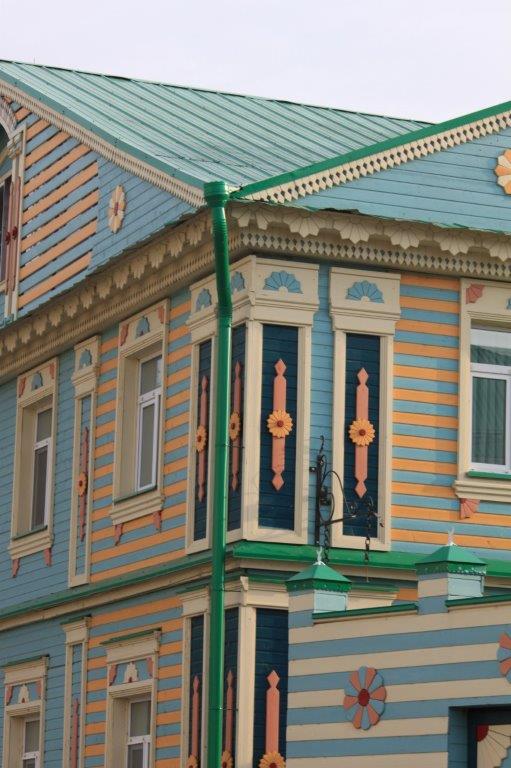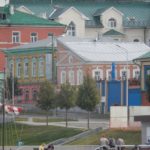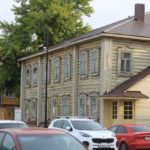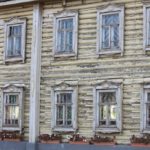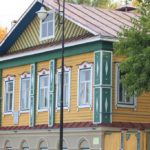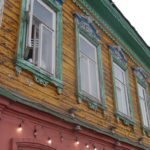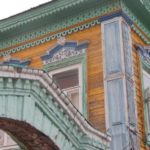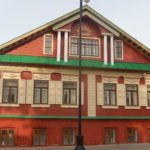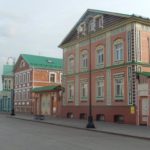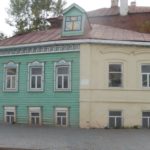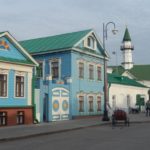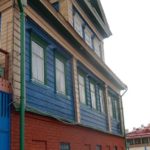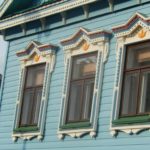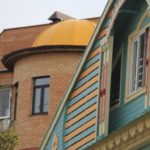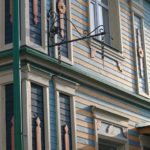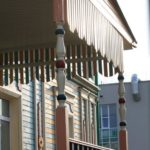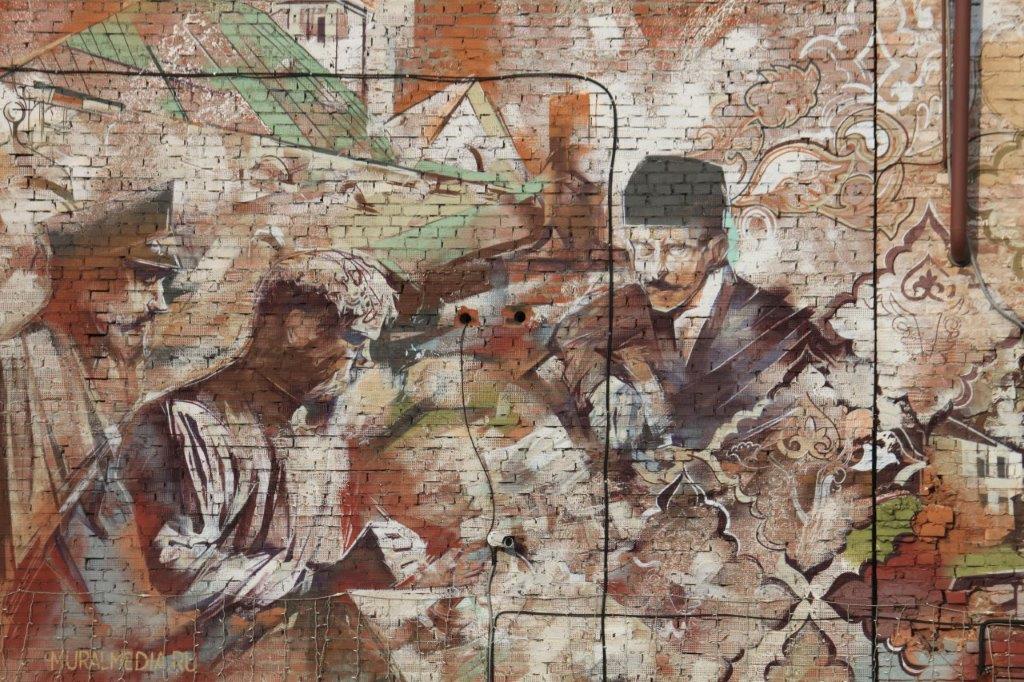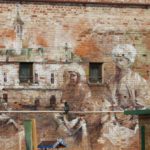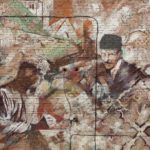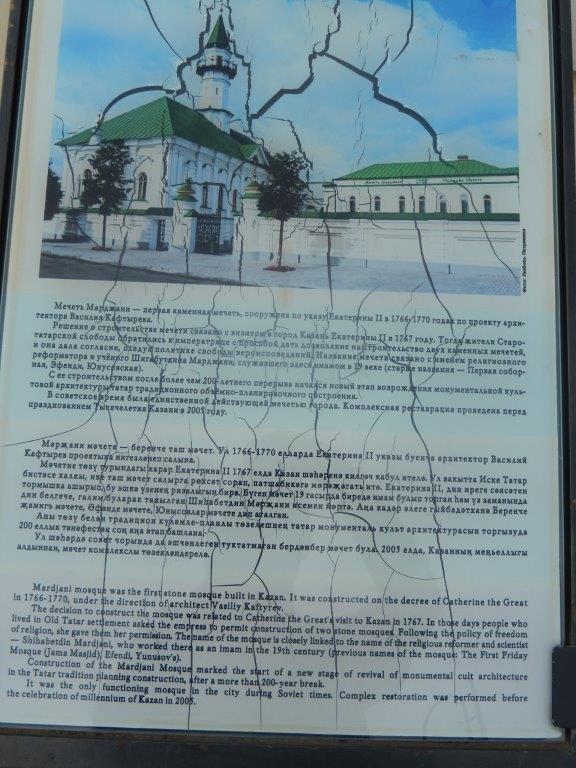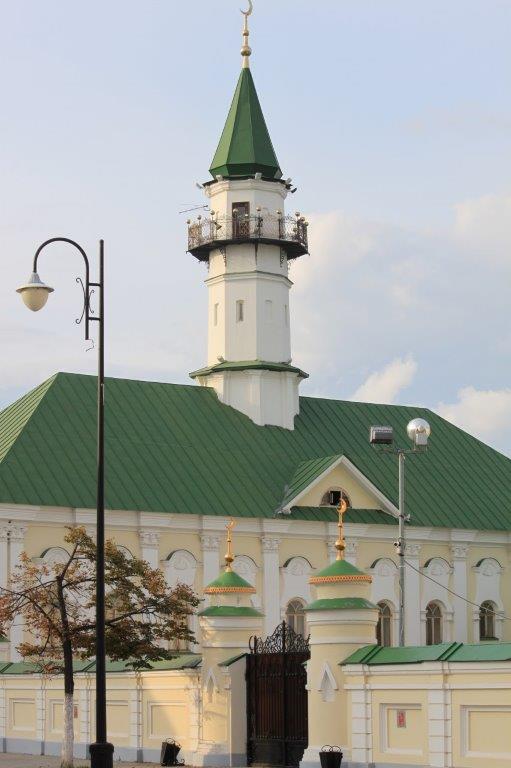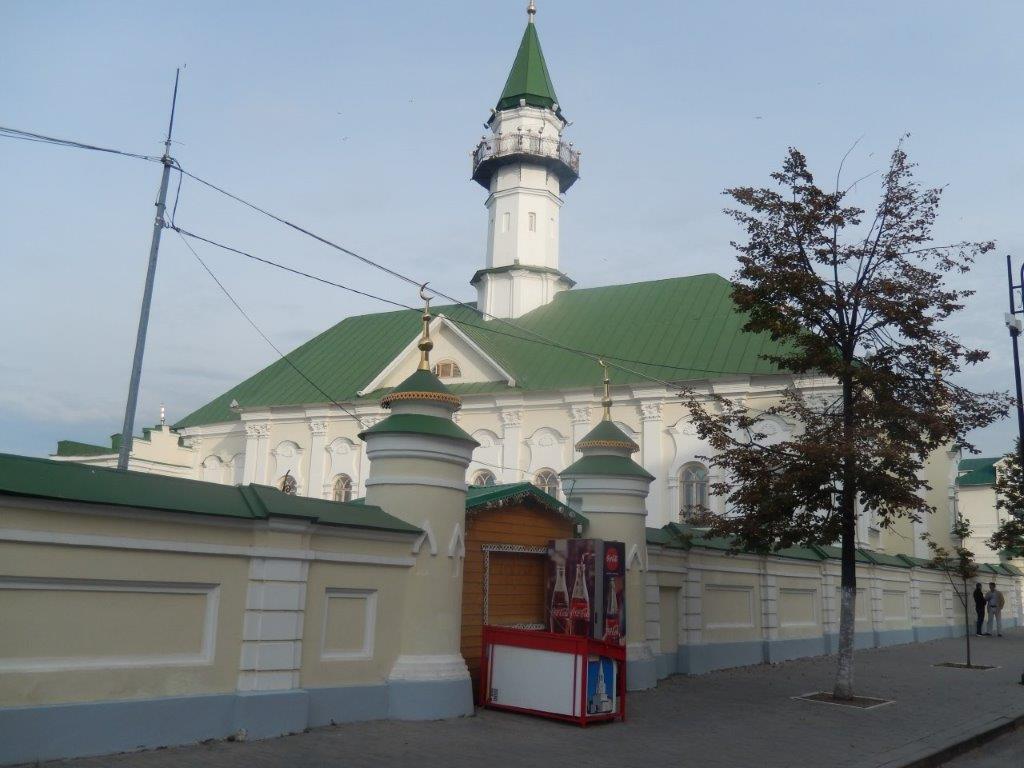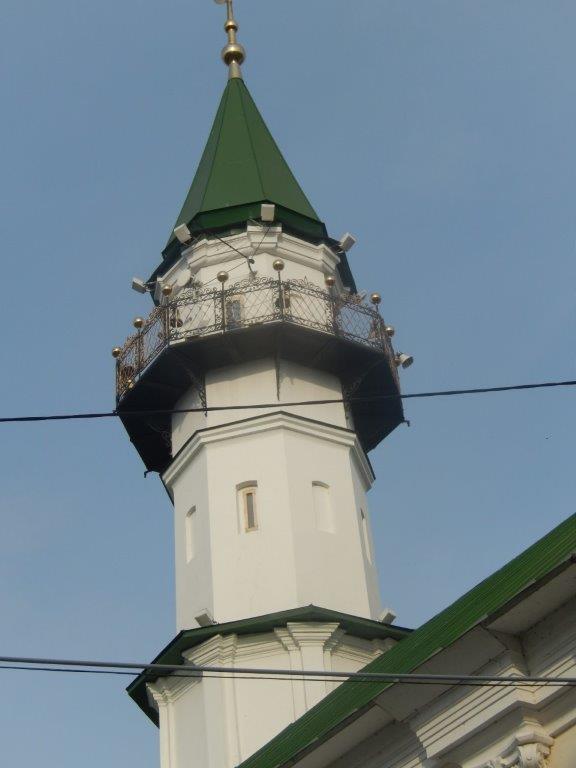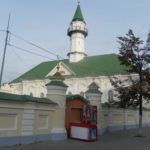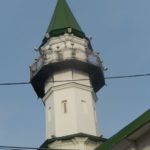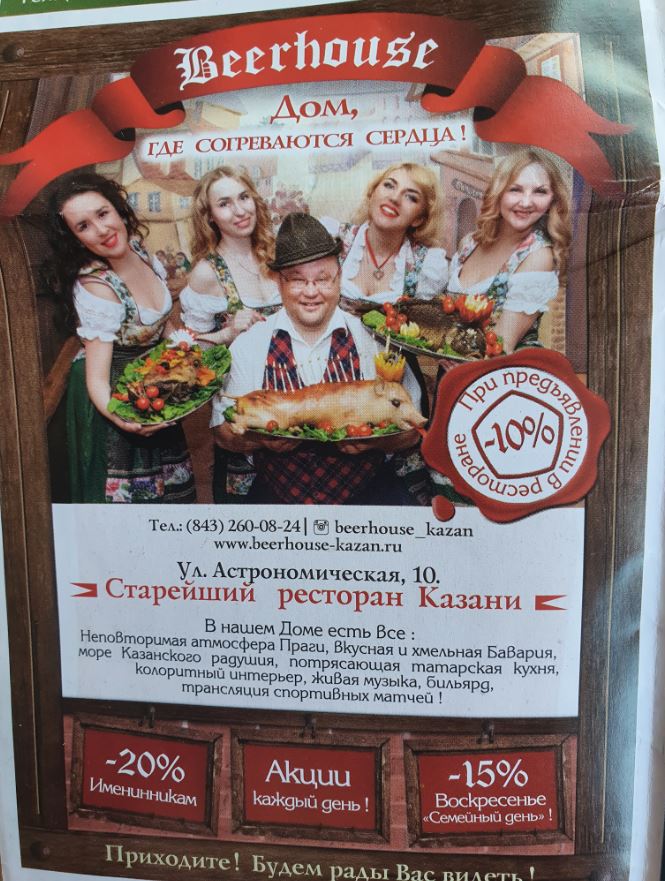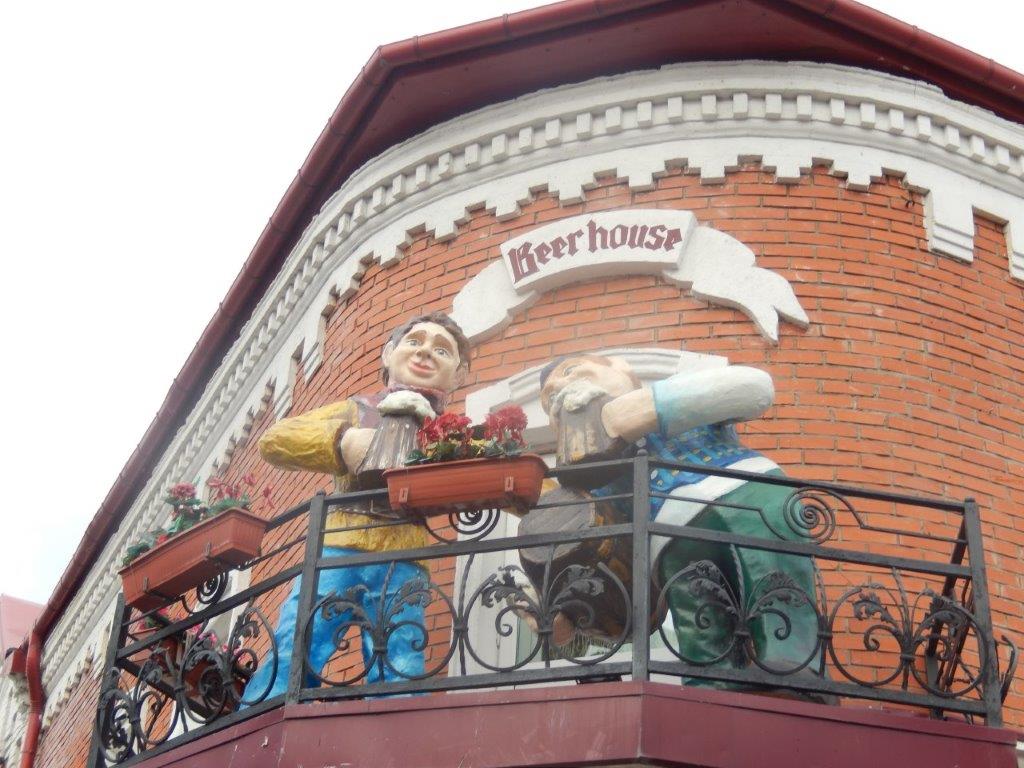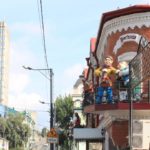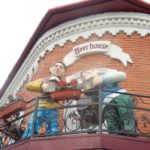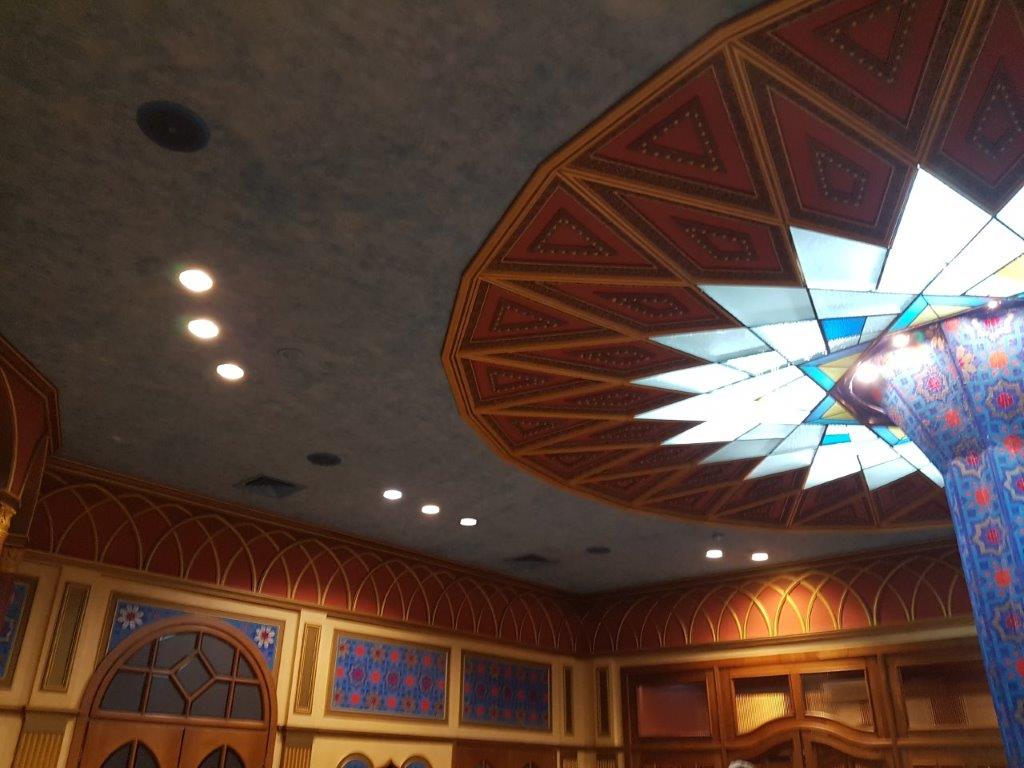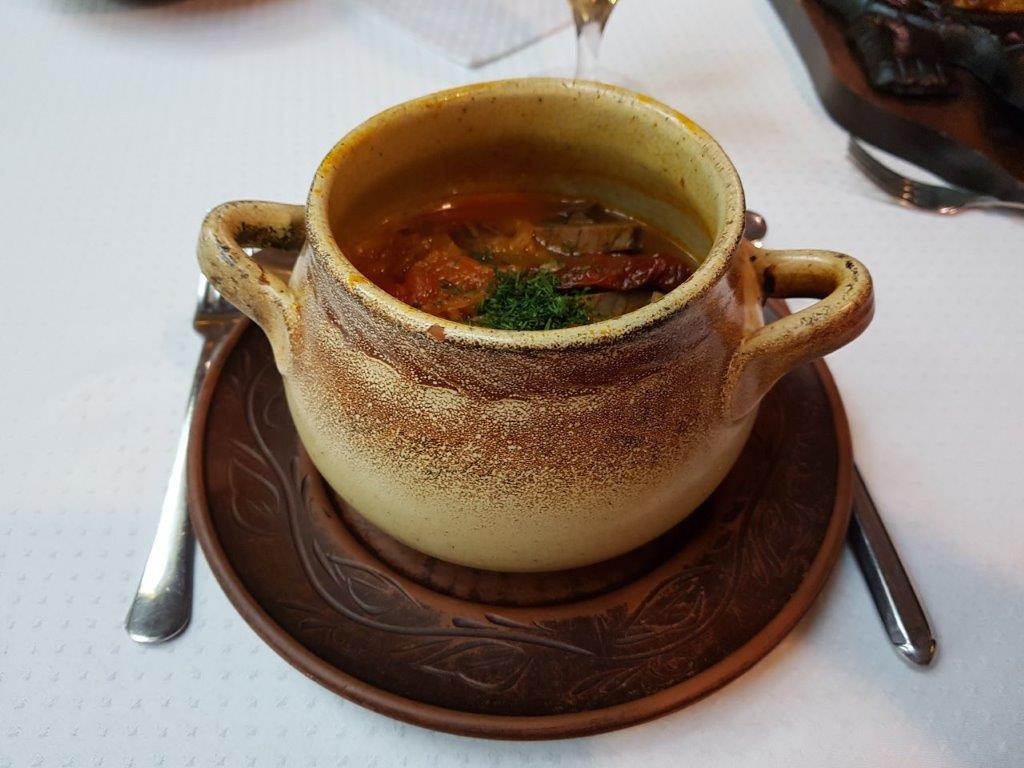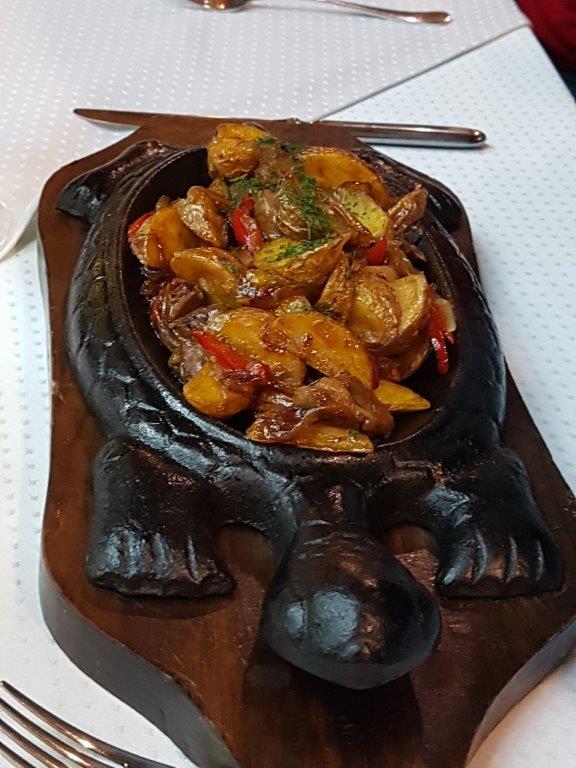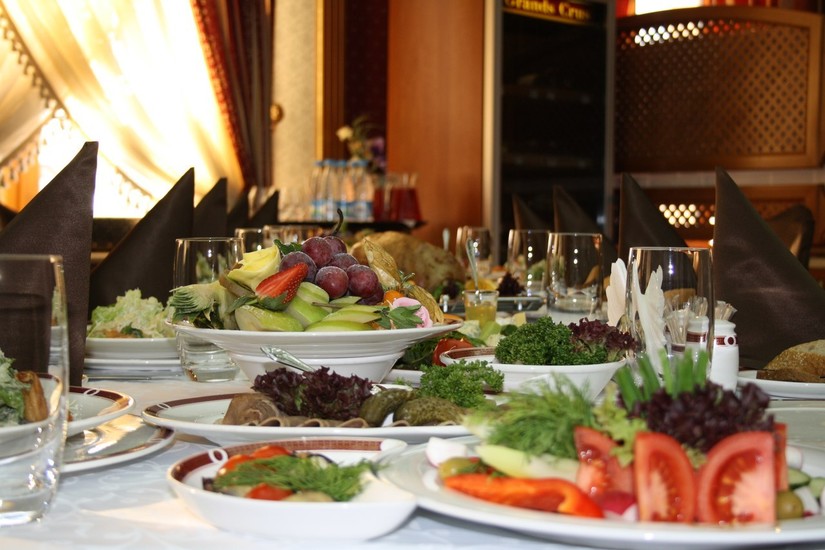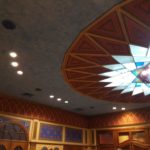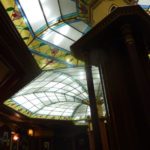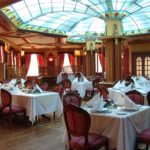City walk through Kazan: Capital of Tatarstan
The Wandelgek hopped on and off the Transsib. He only stayed 1 day (or actually from the early morning to about 21.00 in the evening, but he did have a hotelroom booked nonetheless, because it is the best way to shower and get fresh quickly and to get rid of the unneccesary luggage that quite hinders you when doing a quick and dirty visit of a town. And immediately getting a good and decent breakfast included means that you can quikly hop off the train and get started and afterwards pick up your gear and hop on the train again. Cost is not that high either.
Top Tip:
The Wandelgek found this statement in the Trans-Siberian Railway Lonely Planet guidebook:
Here’s in impression of the 1st hotelroom ever where The Wandelgek did not spend the night…
Time to discover explore the town.
A bit of history 1st
Kazan is the capital of Muslim Tatarstan, which is a sovereign republic within the Russian Federation and it is well supplied with cash by the Kremlin and also by the oil industry.Tatarstan is clearly seen as a vital part of the Russian heartland and therefore it is neccesary to invest in this republic.
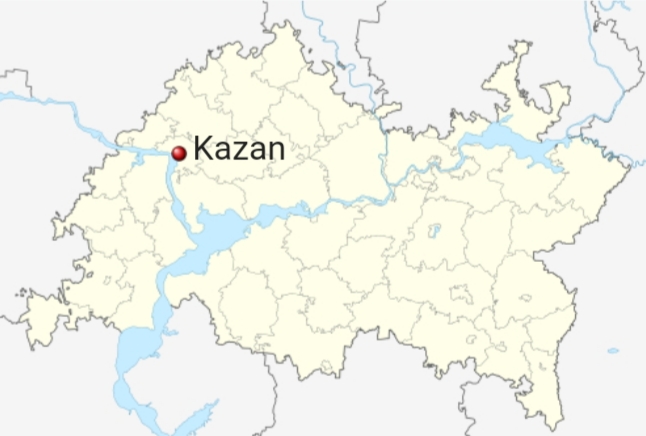
It was founded in the 2nd half of the 13th century, and became the capital of the Khanate of Kazan in the 16th century.
There was great rivalry between Moscow and Kazan and the Orthodox Christian Russians and the Muslim Tatars. There were battles with successes on both sides and the Tatars even succeeded in conquering Moscow but they did not hold it firm enough and it was reconquered.
In the 2nd half of the 15th century and in the early 16th century it was repeatedly besieged by several Moscow princes.
None of them succeeded in conquering the heavily fortified city, which just like Moscow had a Kremlin (a fortress in the heart of the town).
Finally in 1552, Ivan the Terrible decisively defeated and conquered the town, which was quite a feat (more of that can be read later in this blog) and subsequently conquered the remaining parts of Tatarstan. Tatarstan and Kazan were now permanently a part of Russia, expending thus Moscovs (Moscovian Russia) territory almost until the Ural mountains. Russia as we know it began to take shape…
But how did Ivan the Terrible conquer the unconquerable town of Kazan? What did he do differently then his unsuccesful predecessors? Well: All previous attempts to conquer Kazan, even the 1st attempt by Ivan the Terrible, were doomed to fail, because the town was far away from Moscow and had a very strong Kremlin, meaning the city needed to be besieged over a long timespan, which meant that the supply lines to provide the troops with enough ammunition, weapons and food and drinks, were very long and thus vulnerable. Supplies not always reached the tent camps of the troops and moral dropped, meaning that these long besieges were not feasable and had to end before the town could be conquered.
Ivan the Terrible however reacted different from his predecessors in that he did not retreat his troops all the way back to Moscow, but only to the other side of the Volga just a bit out of sight of the Kazan city walls. There he made them build a fortress and he maintained a permanent presence of his troops in the area. The fortress acted as a warehouse for supplies when he attacked the city again in 1552 and this meant the long supply routes from Moscow to Kazan were not that crucial any more, because he had huge stocks in the fortress. This meant his troops could keep up a much longer siege of the town and finally he conquered Kazan and subsequently Tatarstan and incorporated the new territories into the Russia.
This also meant that Russians were now able to move onwards towards the Ural mountains and later into Siberia and eventually even into Alaska…
City walk
Map 1: Kazan squeezed between the Volga and Kazanka rivers
Numbered Map 2: Central Kazan
The Wandelgek started his exploration of Kazan at the:
Kazan Federal University (27)

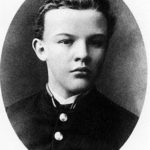 Founded in 1804 as Imperial Kazan University. In 1925, the university was renamed in honour of its most famous student Vladimir Ilyich Ulyanov (Lenin). In 2010, Kazan University received a federal status (for the Volga Region).
Founded in 1804 as Imperial Kazan University. In 1925, the university was renamed in honour of its most famous student Vladimir Ilyich Ulyanov (Lenin). In 2010, Kazan University received a federal status (for the Volga Region).
In front of the Universities main building is the statue of a young Lenin…
The Ushkova House (26)
The House of Zinaida Ushkova is a building in Kazan, in the Republic of Tatarstan, Russia, which was reconstructed in the beginning of the 20th century in an eclectic style. It is an impressive sight in the city center and an object of Russian heritage. In 1919 it became a central building of the National Library of the Republic of Tatarstan and is now open to visitors and tourists.
There is a strange anecdote connected with this beautifully ornamented house:
A young man named Alexey Ushkov, son of the K.K. Ushkov – owner of chemical plants and grandson of tea magnate A.S. Gubkin fell in love (and subsequently married) Zinaida Vysockaya – daughter of Nikolay Vysockiy – professor of surgery, during his student times in Kazan State University. To be able to marry the girl, he needed to impress her and her family so he went to his rich and wealthy uncle and asked him for money which enabled him to build a beautifully ornamented house right in front of the main building of the University. As a wedding gift for his wife, Alexey ordered plan reconstruction of the house in Kazan at Voskresenskaya street in Kazan (nowadays Lobachevskaya street) and house in Moscow (Ermolov House ar Prechistenka, 20) to structural architect Karl Mufke. There is no accurate data about who worked on reconstruction of the house in Moscow. Reconstruction of Kazan buildings Karl Mufke leaded himself. Both buildings performed in mixed style with predominance of baroque and Empire styles.
He didn’t stay long married though, because again he fell in love with another girl and divorced his wife. Again he went to visit his uncle and asked for another contribution of money to be able to build yet another house for his new girlfriend and future new wife.
The House of Ushkova had been reconstructed during 1904-1908 (by other sources at 1903-1907) from three buildings located at Voskresenskaya street. Architect was so engaged into his work that sometimes might forgot about his security. Newspapers of that time write that once he fell down from falseworks and broke two of his ribs but got up and continued his work.
Main part of the premises was demised for living and commerce. For example all ground floor was demised for the shops.
After the October Revolution, the property of the Ushkov family was expropriated. In 1919 House of Ushkova became a central building of National Library of the Republic of Tatarstan – one of the biggest libraries of Volga region.
Initial house planning and interior finishing are still well preserved.
What puzzles me most about this story is this simple question: What rich and wealthy uncle provides a nephew TWICE with money to build a house for a new girlfriend?
WOW! That is one hell of an uncle!
Saints Peter and Paul Cathedral (22)
A bit further The Wandelgek stumbled upon the beautiful Peter and Paul Cathedral.
Saints Peter and Paul Cathedral (Petropavlovsky Cathedral, Russian: Петропавловский собор) is a Russian Orthodox church in Kazan (Tatarstan). It is one of the most famous churches in Naryshkin Baroque.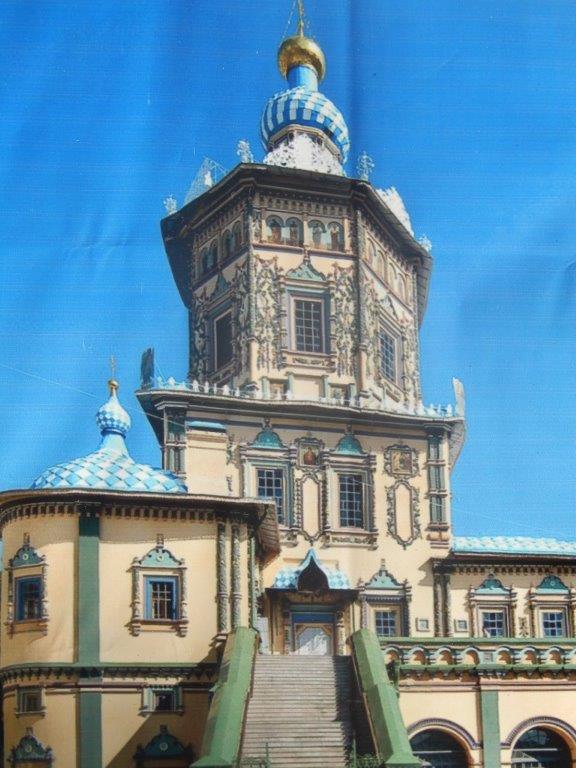
The temple is consecrated in honour of divine Tsar Peter I patron of Russia.
Saints Peter and Paul Cathedral is built in 1722. Constructions were operated by merchant Ivan Afanasievich Mikhlyaev the head of the imperial factories in Kazan.
Most likely the oriental-like cathedral and its bell tower were constructed by common Moscow and Kazan building masters.
The Wandelgek entered the beautiful interior of the cathedral…
Walking towards the 1st of May Square, The Wandelgek spotted the bright blue domes of the Kazan Cathedral (9)
1st of May Square
Monument of Musa Jalil
Musa Cälil; February 15, 1906 – August 25, 1944) was a Soviet Tatar poet and resistance fighter. He is the only poet of the Soviet Union who was simultaneously awarded the Hero of the Soviet Union award for his resistance fighting (agaist Nazism in the WWII), and the Lenin Prize for having written The Moabit Notebooks; both the awards were awarded to him posthumously. This monument is located between the Kazan Kremlin and the Tatar National Museum on de 1st of May Square.
The monument to Musa Jalil is a monumental complex, erected in May 1966 on May 1 Square in Kazan in memory of the Hero of the Soviet Union , Lenin Prize laureate – poet and patriot Musa Jalil , a member of the anti-fascist underground , executed in a Nazi prison in 1944.
The monument is located on the southern facade of the Kazan Kremlin opposite the buildings of the City Council and the National Museum of the Republic of Tatarstan near the place where in 1894 – 1918 there was a monument to Alexander II .
Unveiled on November 3, 1966 (in the year of the celebration of the 60th birthday of Musa Mustafayevich Zalilov), the monument is a spatially developed complex consisting of three main parts: a stylobate site, a sculpture and a granite wall. The authors of the composition: sculptor V. E. Tsigal and architect L. G. Golubovsky.
In 1974, the monument to Musa Jalil was included in the list of cultural monuments of the RSFSR that are subject to protection as monuments of state significance .
Site
A trapezoidal granite platform, raised above ground level, orders the uneven relief of the area with a large difference in height. In the center is a flower garden, in a reduced form repeating the configuration of the site. Polished granite benches were placed on the sides.
From the side of Kremlin street there is a parking for cars and tourist buses.
A staircase leads from the western side of Bauman Street and the Kremlyovskaya metro station to the site.
Twice a year – February 15 (the birthday of Musa Jalil) and August 25 (the anniversary of the execution of the “Kurmashev group”) solemn rallies are held at the monument with the laying of flowers.
Sculpture
The sculpture rises 7.9 m from the small base of the trapezoid. Plastic figure is characterized by a monumental enlargement of forms, completeness and clarity of modeling.
The ideological-figurative idea of a dynamic composition is that Musa Jalil is given in an indomitable impulse. The poet, who died in the Berlin prison of Plotzensee, seems to be tearing apart the chains of barbed wire that bind him . A topless figure expresses power and energy, a proudly raised head, an inexorable resolute look speak of courage, perseverance, moral strength and heroism.
On a bronze pedestal representing a single sculptural whole with the figure of Musa Jalil, the facsimile inscription: “M. Poured”.
Wall
A wall of granite blocks, partially polished, partially only slightly processed, was erected along the long base of the trapezoid of the site. On the blocks are stylized images of swallows and three quotes from the poems of Musa Jalil (in Tatar and Russian).
On August 25, 1994, in memory of Musa Jalil’s comrades-in-arms and in connection with the 50th anniversary of their death in the Plotzensee prison, a bas-relief dedicated to them was opened on the granite wall . It consists of portraits of ten members of the Tatar underground: Gaynan Kurmashev , Abdullah Alish , Fuat Sayfulmulukov, Fuat Bulatov, Garif Shabaev, Akhmet Simayev, Abdulla Battalov, Zinnat Khasanov, Akhat Atnashev and Salim Bukharov.
Gostiny Dvor (The Guest’s Court) (2)
The National Museum of the Republic of Tatarstan (NM RT) is the largest museum in Tatarstan. It was founded as a Kazan Town Scientific and Industrial Museum in 1894 and opened on April 5, 1895. The basis of the museum is a private collection of 40 thousandth items of Andrei Fedorovich Likhachev (1832-90), a well-known regional archaeologist, numismatist, collector also the exhibits of scientific and industrial exhibition in 1890. Well-known scientists of Kazan University stood at the roots of the establishment of the museum and of the museum’s collections formation, such as: A.A. Stuckenberg, N.P. Zagoskin, P.I. Krotov, N.F. Vysotsky, N.F. Catania and others. The museum occupies the former building of Gostinniy dvor (guest house), a monument of architecture and history of Russian Federation and the Republic of Tatarstan.
Gostinyi dvor is a historic Russian term for an indoor market or shopping centre. It is translated from Russian either as “guest court” or “merchant yard”, although both translations are inadequate. These structures originated as collections of small shops where merchants from other cities could, at designated times, come to sell their wares. Such structures, constructed in every large Russian town during the first decades of the 19th century, are fine examples of Neoclassical architecture. The building houses the National Museum of the Republic of Tatarstan.
Kazan Kremlin (1)
The Kazan Kremlin is the chief historic citadel of Russia, situated in the city of Kazan. It was built at the behest of Ivan the Terrible on the ruins of the former castle of Kazan khans. It was declared a World Heritage Site in 2000.
 Spaskaya Tower (Main gate)
Spaskaya Tower (Main gate)
A recognizable architectural feature is the Spasskaya Tower, which anchors the southern end of the Kremlin and serves as the main entrance to the Kremlin.
The Spasskaya Tower is named after the Spassky Monastery, which used to be located nearby. Among the monastery’s buildings were the Church of St. Nicholas (1560s, four piers) and the Cathedral of the Saviour’s Transfiguration (1590s, six piers). They were destroyed by the Communists during Joseph Stalin’s rule.
The Spasskaya Tower was built in two floors by 16th century Pskov architects Ivan Shiryai and Postnik Yakovlev. From the inside, the northern side of the fortress to the Spasskaya Tower adjoined the gate to Spasskaya Church, which has now merged with the tower. The typical Pskovian architectural elements of the facade face the main street of the Kremlin. At the end of the 17th century, instead of three tiers, the tower was built with two brick eight-sided tiers with a brick roof, getting its present, familiar appearance. Until 1917, the tower was crowned with the double-headed coat of arms of the Russian state. In the 18th century, a ringing clock was installed in the upper tier, and even earlier a large bell was moved from a small belfry (now lost, located on the castle wall on the left side of the tower). Until the middle of the 19th century, there was a moat with a stone bridge in front of the tower.
Kul Sharif Mosque
The Kul Sharif Mosque located in the Kazan Kremlin, was reputed to be – at the time of its construction – one of the largest mosques in Russia, and in Europe outside of Istanbul. The Qol-Şärif mosque was recently rebuilt inside the citadel
History
Originally, the mosque was built in the Kazan Kremlin in the 16th century. It was named after Kul Sharif, who was a religious scholar who served there. Kul Sharif died with his numerous students while defending Kazan from Russian forces in 1552. It is believed that the building featured minarets, both in the form of cupolas and tents. Its design was traditional for Volga Bulgaria, although elements of early Renaissance and Ottoman architecture could have been used as well. In 1552, during the Siege of Kazan it was destroyed by Ivan the Terrible.
Ivan IV Vasilyevich
Exterior
Interior
Söyembikä Tower
The most conspicuous landmark of the Kazan Kremlin is the leaning Söyembikä Tower, which probably goes back to the reign of Peter the Great. A well-known legend connects the tower with the last queen of the Khanate of Kazan.
Söyembikä Tower, also called the Khan’s Mosque, is probably the most familiar landmark and architectural symbol of Kazan.
Once the highest structure of that city’s kremlin, it used to be one of the so-called leaning towers. By 1990s, the inclination was 198 centimeters (78 in). Diverse stabilization methods were used to straighten the tower in the 1930s and 1990s, and it no longer leans.
The tower’s construction date is enshrouded in mystery. Several scholars date its construction to the turn of the 18th century, when tiered towers were exceedingly popular in Russia.
A legend postulates that the tower was built more than a century earlier by Ivan the Terrible’s artisans in just a week’s time. The lend goes as follows:
A Russian prince wants to marry a beautiful Kazan Queen Söyembikä, but she does not agree and wishes to avoid this marriage. This however is quite dangerous because the prince is part of the coutship of Ivan the Terrible, conquerer of Kazan. So she thinks of a list to prevent this marriage from happening and she agrees to marry the prince, on the condition that he builds her a five tier tower in 5 days.
This was thought of as unfeasable, but the prince had access to the skills of the best artisans, architects and builders because of his connection with Ivan the Terrible. He therefore agreed with her conditions. The builders succeeded above all expectations, to finish the tower on time.
The Queen agreed to marry the prince but asked for one more favor. She asked whether she was allowed to climb the stairs to the top of the tower to enjoy the view over her beloved Kazan. The prince proudly agreed. When the queen arrived at the top she changed her mind about marriage, looked around her and enjoyed the view over Kazan for a last time … and then she jumped down towards her death.
But just before she would have hit the ground, she changed into a beautiful white swan and flew away,
This legend has nothing to do with the real history of the tower because Söyembikä was forcibly detained by Muscovite forces in 1551 and moved to the city of Kasimov and died years later (and suicide is an unpardonable sin in the queen’s Muslim faith). The legend was popular since the early 18th century.
Some even go as far as stating that the tower is the only extant structure from the pre-Russian Tatar citadel. If the tower really reflects some original features of Tatar architecture, then its design should have certainly influenced that of the Kremlin towers in Moscow. Supporters of the theory point out that the only similar structures were built in Central Asia, which was politically and culturally connected with the derelict Khanate of Kazan. Several facts point to the validity of this theory: the size of the masonry, the absence of documentary evidence supporting Russian building, the respect paid to the tower by the local Tatar population, and so forth.
In the Imperial period, the tower used to be topped with a double-headed eagle, which the Bolsheviks replaced with a red star. It is currently crowned with a Muslim crescent.
In the early twentieth century, the architect Alexey Shchusev reproduced the structure’s outline in the Kazan Rail Station of Moscow.
Kremlin Fortifications
Also of interest are snow-white towers and walls, erected in the 16th and 17th centuries but later renovated.
Volga River
From the Kremlin it was possible to see the mighty Volga River…
Kazanka River (Reka Kazanka)
…and also visible was the Kazanka River which floats through Kazan and subsequently joins the Volga at Kazan.
The Wandelgek walked past some beautiful flowerbeds
Annunciation Cathedral
The Kazan Kremlin includes many old buildings, the oldest of which is the Annunciation Cathedral (1554—62), the only 16th-century Russian church to have six piers and five apses. Like many of Kazan’s buildings of the period, it is constructed of local pale sandstone rather than of brick. The renowned Pskov architects Postnik Yakovlev and Ivan Shirjay (called Barma) were invited by the Tzar to rebuild the Kazan Kremlin in stone. The cathedral bell tower was erected in five tiers at the urging of Ivan the Terrible and was scored to resemble the Ivan the Great Belltower in Moscow, but was pulled down by the Soviets in 1930.
Exterior
Interior
Kazansky Cathedral (9)
Palace of Agriculture (52)
The headquarters of the Ministry of Agriculture and Food of the Tatarstan Republic is in a building, constructed in eclectic style, combining the elements of classicism and empire. Its exterior is awesome but also has an eyecatcher: the focal point of the construction is a huge iron tree which of course acknowledges the purpose of the building. The building is situated directly across from the Kazan Kremlin.
Bauman Street
Baumana Street is a pedestrian street in the heart of Kazan, the capital of the Tatarstan, Russia. It is named after Nikolay Bauman, a Russian revolutionary, and is located in the central part of the city. The street starts at the foot of the Kremlin and reaches Tukay Square, the central square in the city.
Baumana Street is paved with multicoloured bricks; some benches and two lines of lanterns are set there. There are also planted lindens on the street. Different fairs and festive presentations are held on Baumana Street.
There are also several monuments scattered over the length of Bauman Street.
Monument to Chaliapin
The world-renowned Russian opera singer Fyodor Shalyapin (also spelled Chaliapin) was born in Kazan in 1873 and lived there until he was 17, gaining his first experiences of singing in public in a church choir in the city. This monument was unveiled in 1999 on the 125th anniversary of Shalyapin’s birth.
Monument of The Cat of Kazan
The Cat of Kazan (lubok)
 The Cat of Kazan is a lubok (Russian: лубо́к) from sometime during the 18th century. It is a possible satire of Peter the Great. The author of this lubok is unknown. (A lubok is a Russian popular print, characterized by simple graphics and narratives derived from literature, religious stories, and popular tales. Lubki prints were used as decoration in houses and inns. Early examples from the late 17th and early 18th centuries were woodcuts, followed by engravings or etchings, and from mid-19th century lithography. They sometimes appeared in series, which might be regarded as predecessors of the modern comic strip. Cheap and simple books, similar to chapbooks, which mostly consisted of pictures, are called lubok literature. Both pictures and literature are commonly referred to simply as lubki. The Russian word lubok derives from lub – a special type of board on which pictures were printed.
The Cat of Kazan is a lubok (Russian: лубо́к) from sometime during the 18th century. It is a possible satire of Peter the Great. The author of this lubok is unknown. (A lubok is a Russian popular print, characterized by simple graphics and narratives derived from literature, religious stories, and popular tales. Lubki prints were used as decoration in houses and inns. Early examples from the late 17th and early 18th centuries were woodcuts, followed by engravings or etchings, and from mid-19th century lithography. They sometimes appeared in series, which might be regarded as predecessors of the modern comic strip. Cheap and simple books, similar to chapbooks, which mostly consisted of pictures, are called lubok literature. Both pictures and literature are commonly referred to simply as lubki. The Russian word lubok derives from lub – a special type of board on which pictures were printed.
The text on the Lubok The Cat of Kazan reads: “Cat of Kazan, mind of Astrakhan, reason of Siberia, he lived sweet, ate sweet, and farted sweet.”
The mice are burying the cat (lubok)
“The Mice burying the cat” (Russian: Мыши кота погребают) is thought to be a caricature of Peter the Great’s burial. The caption above the cat reads “The Cat of Kazan, the Mind of Astrakan, the Wisdom of Siberia”, a parody of the title of tsars.
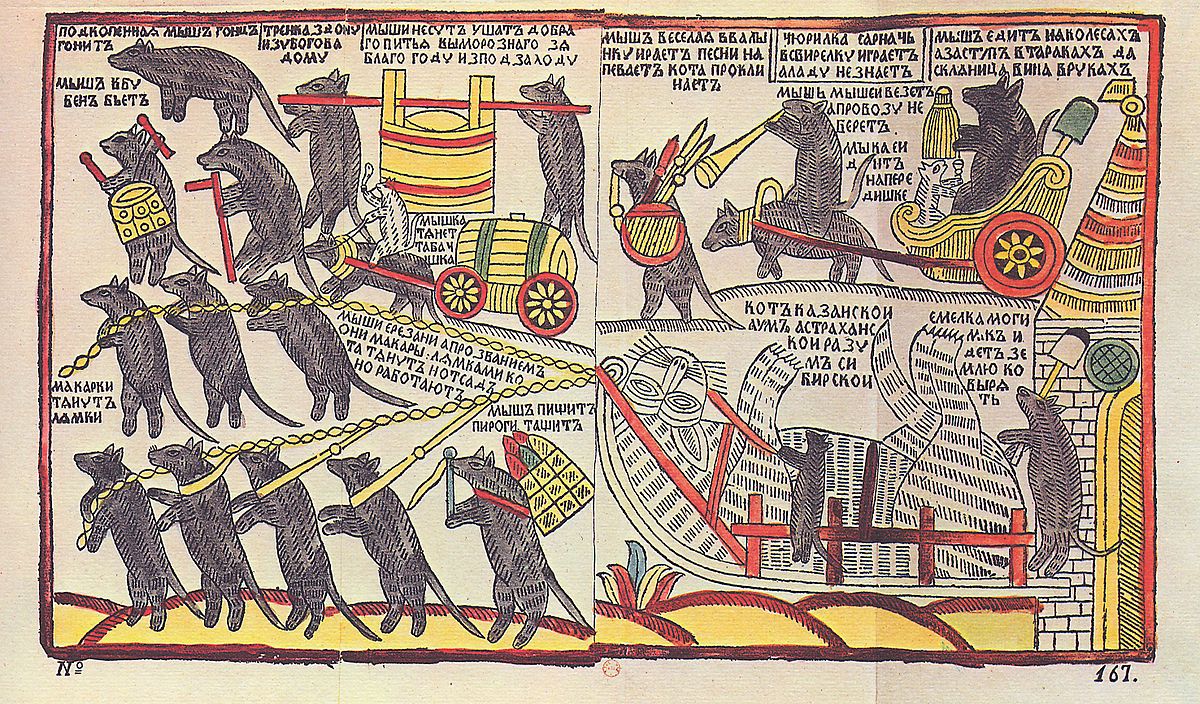
“The Mice are burying the Cat”. An 18th-century Russian lubok print with a very popular plot, that of the mice burying the cat. It has been commonly thought this plot is a caricature of Peter the Great’s burial, authored by the opponents of his innovations. (Indeed, the caption above the Cat says, “The Cat of Kazan, the Mind of Astrakhan, the Wisdom of Siberia” — which itself is a parody of the title of Russian Czars). However, it has been claimed by modern researchers that this is simply a representation of carnivaluesque inversion, “turning the world upside down”.
But there are quite other interpretationes too. One of those is as follows: The Cat,(=Kazan) a dangerous enemy of the mice (The Moscovite Russians) is finally defeated. This would refer to the final conquering of Kazan by the Russian troops of Ivan the Terrible in 1552.
The statue
The Kazan Cat regularly appears on lists of the most interesting and unusual monuments of Russia. Its place is in the centre of Kazan, on the pedestrian Bauman street. It is a sculptural and architectural composition three metres high in the form of a well-fed cat lying on a couch under and a mouse hiding on top of a tent roof.
Yet another story about the Kazan Cat tells us about Kazan cats strolling through the Winter Palace in Saint Petersburg
 The history of the Kazan Cat begins with the reign of Empress Elizabeth Petrovna. Based on historical legends, it is widely known that the Russian Empress learned that there are no mice in Kazan. The fact is that in those days, the cats of Kazan were excellent mice hunters of a special breed – strong, active, with a large head, a muscular neck and a short tail. By the highest order made on October 13, 1745, 30 Kazan cats were transported to St Petersburg to catch mice that had proliferated in the unfinished Winter Palace (also known as modern day “Hermitage” Museum). Given their bestowed new role, the cats did their job, having saved the palace from harmful rodents. The Cat of Kazan is nowadays seen in many places in Kazan, like the statue, but also in pub names and paintings, like the one to the right.
The history of the Kazan Cat begins with the reign of Empress Elizabeth Petrovna. Based on historical legends, it is widely known that the Russian Empress learned that there are no mice in Kazan. The fact is that in those days, the cats of Kazan were excellent mice hunters of a special breed – strong, active, with a large head, a muscular neck and a short tail. By the highest order made on October 13, 1745, 30 Kazan cats were transported to St Petersburg to catch mice that had proliferated in the unfinished Winter Palace (also known as modern day “Hermitage” Museum). Given their bestowed new role, the cats did their job, having saved the palace from harmful rodents. The Cat of Kazan is nowadays seen in many places in Kazan, like the statue, but also in pub names and paintings, like the one to the right.Terrace food
In Bauman Street is probably the highest concentration of restaurants and The Wandelgek was ready to try some iconic Russian food: Borsjt.
The Wandelgek found a nice street terrace at Bauman Street 66 and ordered a delicious bowl of Borsjt, the iconic Russian beet soup…
An old woman passed us trying to sell crochet made of wool…
Then The Wandelgek proceeded on his citywalk through Kazan’s rich historic center and walked towards the city lake of Nizhy Kaban.
Nizhy Kaban Lake
Nizhny (Blizhny) Kaban is a lake that is part of the Kaban Lakes are a system of lakes in Kazan, Republic of Tatarstan, Russia that includes Nizhny (Blizhny) Kaban, Verkhny Kaban, and Sredny Kaban. With a combined area of 1.86 square kilometers (0.72 sq mi), they comprise the biggest lake in Tatarstan.
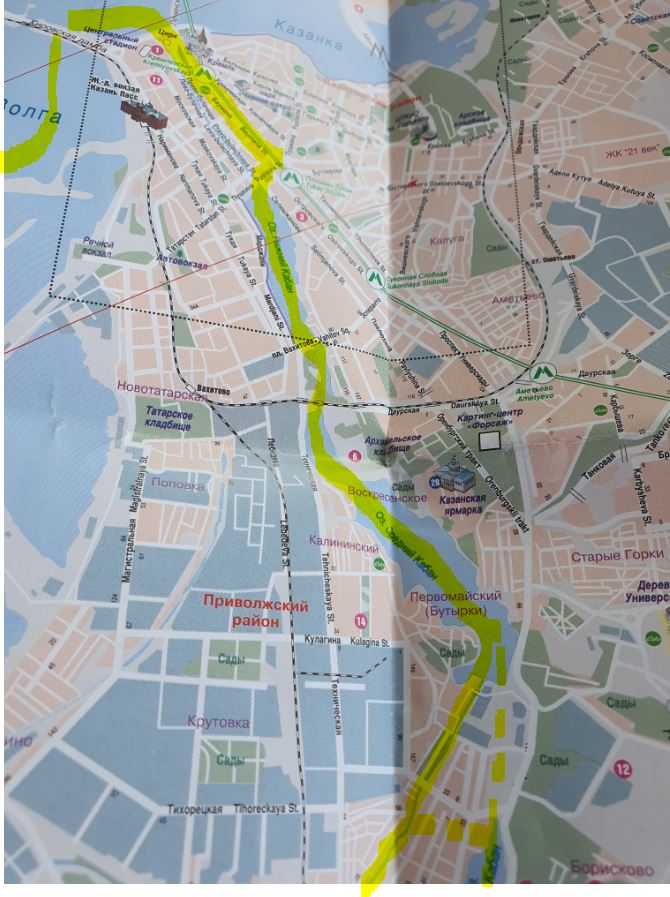
The lakes are connected with the Kazanka River by the Bolaq channel and a subterranean channel from Bolaq-Qazansu. They are also connected with the Volga River by the city’s sewage system (yellow marker lines).
The Thousandth Anniversary of Islam Mosque is situated on the bank.
The medieval Volga Bulgarians’ graves which date back to 12-13th century were founded on the banks of Arğı Qaban.
One legend claims that, in the days before the Khanate of Kazan fell, the Khans threw all their valuables into the lakes.
Another legend about the origin of the lakes’ names claims that, at the Mongol invasion of Volga Bulgaria, the Bulgarian prince Qabanbäk, escaped from Bilär city (or in Bolghar), fled to the banks of the lake and built a castle. Another version is that he founded İske Qazan.
Tatar myth also places Zilant, who had been transformed to Diü, as the ruler of the mythological Underwater Kingdom of Qaban.
The pics below show the banks of Nizhy Kaban Lake:
The old Tatar wooden house settlement of Sloboda
On one of the banks of the lake is the Tatar wooden house settlement of Sloboda.
Wooden Kazan
In the beginning of the 1900s most of Central Kazan was covered by wooden buildings, usually consisting of two floors. There was a historical environment of Kazan citizens, but not the best place to live in. During the Republican program “The liquidation of ramshackle apartments” most of them (unlike other Russian cities), especially in Central Kazan, where the land is not cheap, were destroyed and their population was moved to new areas at the suburb of the city (Azino, Azino-2, Quartal 39). Nearly 100,000 citizens resettled by this programme.
Nowadays there are a few scattered wooden houses left, but the main area where wooden houses were either replicated or where they survived through time, is in Sloboda. This is a small settlement of Tatar architecture and it has a museum and some beautiful wooden mosques. The houses are painted in bright joyous colors and it was absolutely fabulous to walk through the streets of this rainbow colored village…
Statue at the lake;
Murals at the Museum of Tatarstan
Outside at the coutyard in front of the museum were several beautiful murals…
Al Mardjani Mosque
The Märcani Mosque was built between 1766 and 1770 and became the first mosque to be built in Kazan since Ivan the Terrible’s 1552 conquest of Kazan. Permission to build the mosque was personally granted by Empress Catherine the Great. The mosque was built in the traditional Tatar style of a building with a central minaret on the roof. Also known as the First Congressional Mosque, it is now named after the Tatar theologian and historian Şihabetdin Märcani, who served as the mosque’s imam in the mid-19th century. This was the only mosque in Kazan not to be closed during the Soviet period.…
Beerhouse
Before returning to the hotel to prepare for the next journey by railway, The Wandelgek decided to visit the Beerhouse, which offered a large range of Specialty Beers, and drank some great dark beers. On one of the walls was a drawing of The well fed Kazan Cat, now totally wasted after having drunk some mugs of beer from a large barrel. When he asked for the bill, it came with two complementary strips of menthol chewing gum. Maybe this was offered to those man who needed to hide their alcoholic breath from the missis waiting at their home? 😉
House of Tatar Culinary (Restaurant at Bauman Street 31/12)
In the early evening there was still time to go to a restaurant the offered a typical Tatar Cuisin., meaning lots of spiced meat on the menu. The restaurant was decorated in a modern Tatar/Muslim style …
After a delicious diner, it was time to return to the hotelroom and from there to the railway station of Kazan, from where The Wandelgek would embark on the Trans Siberian Express for yet another a bit longer stretch via the Trans Siberian Ural Line. More of that in my next upcoming blogpost.






